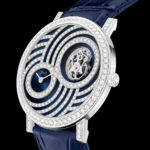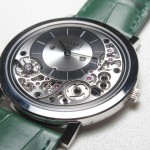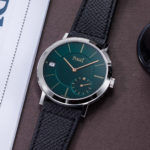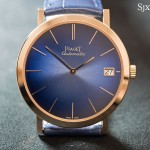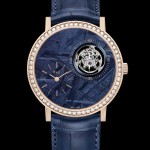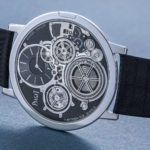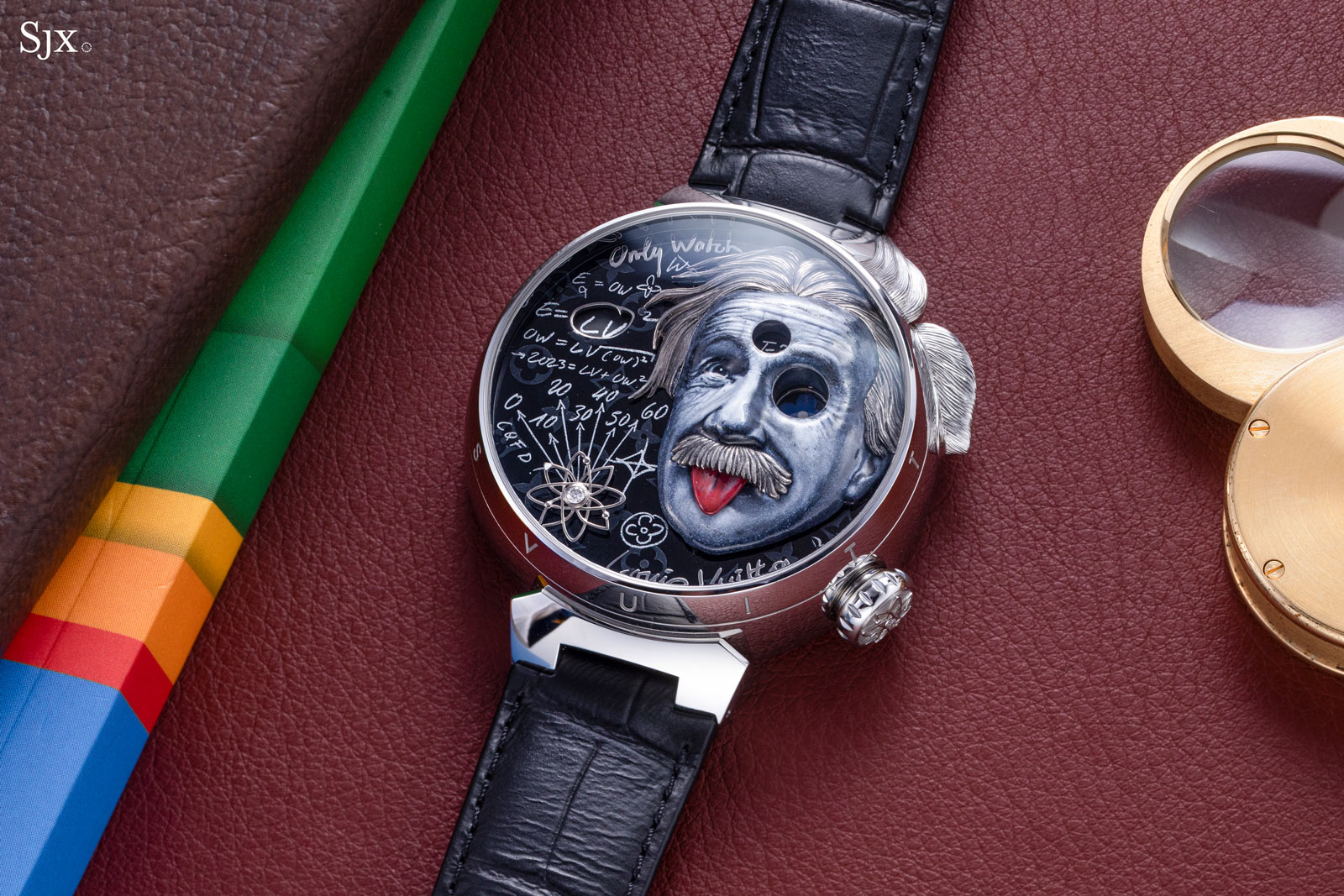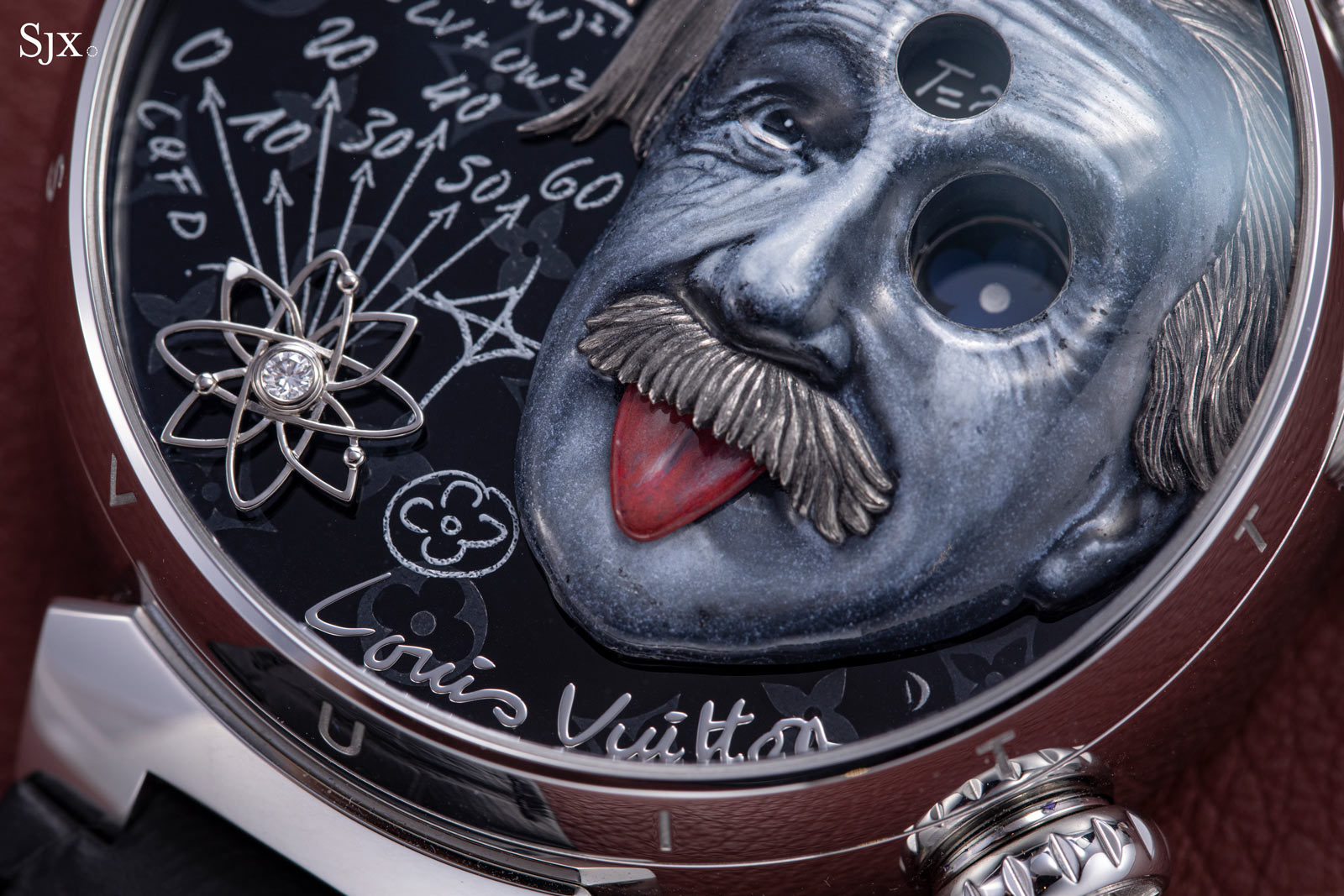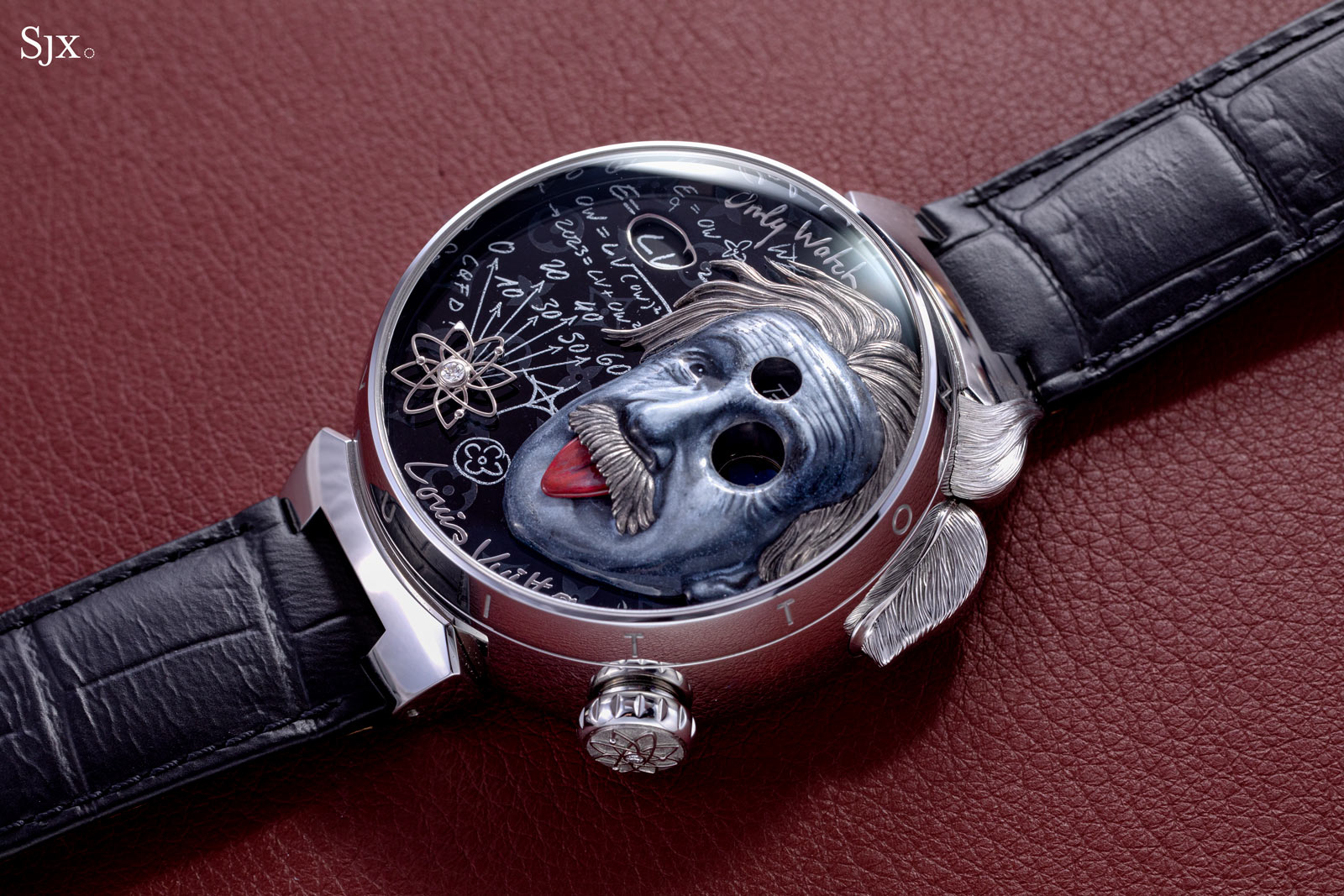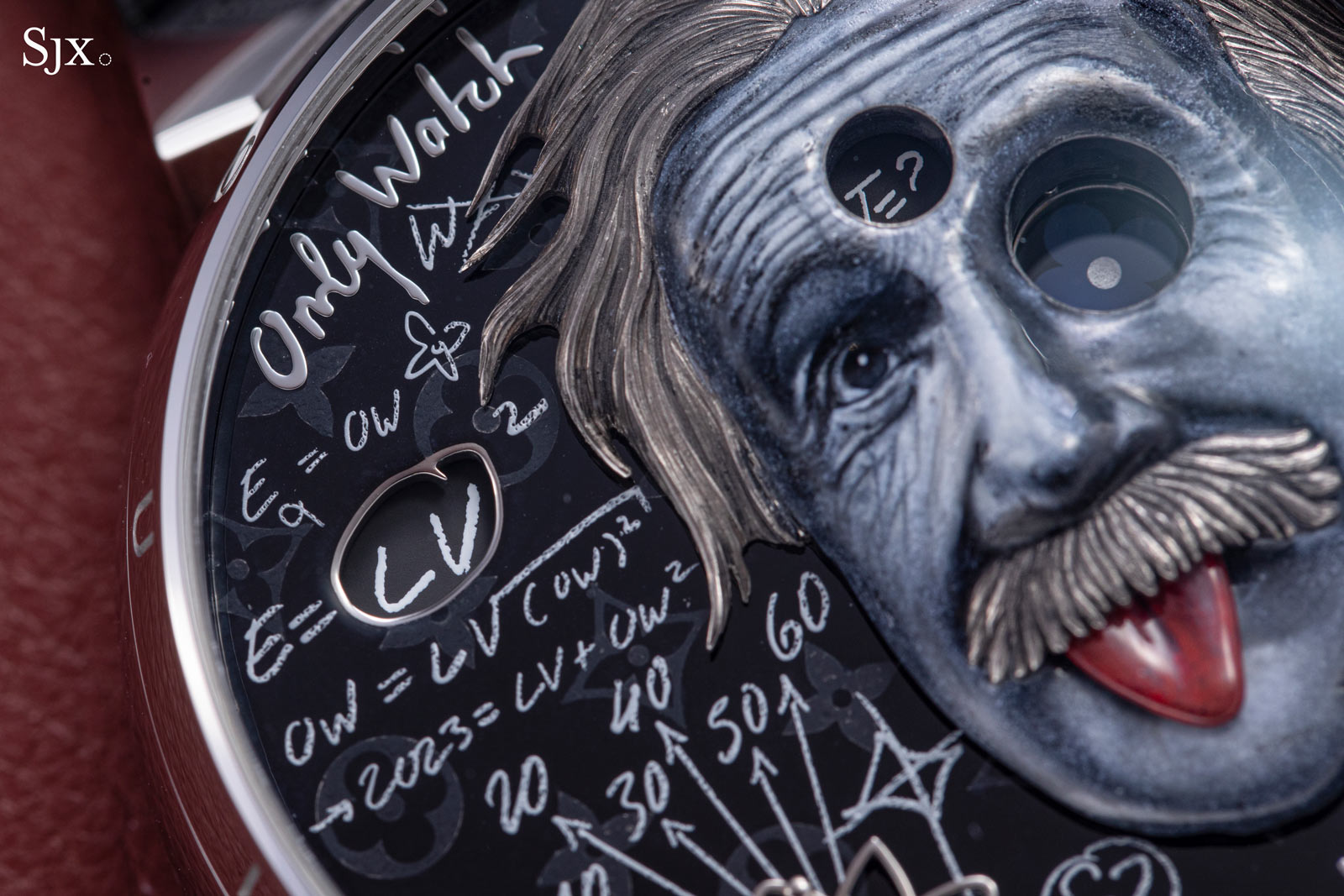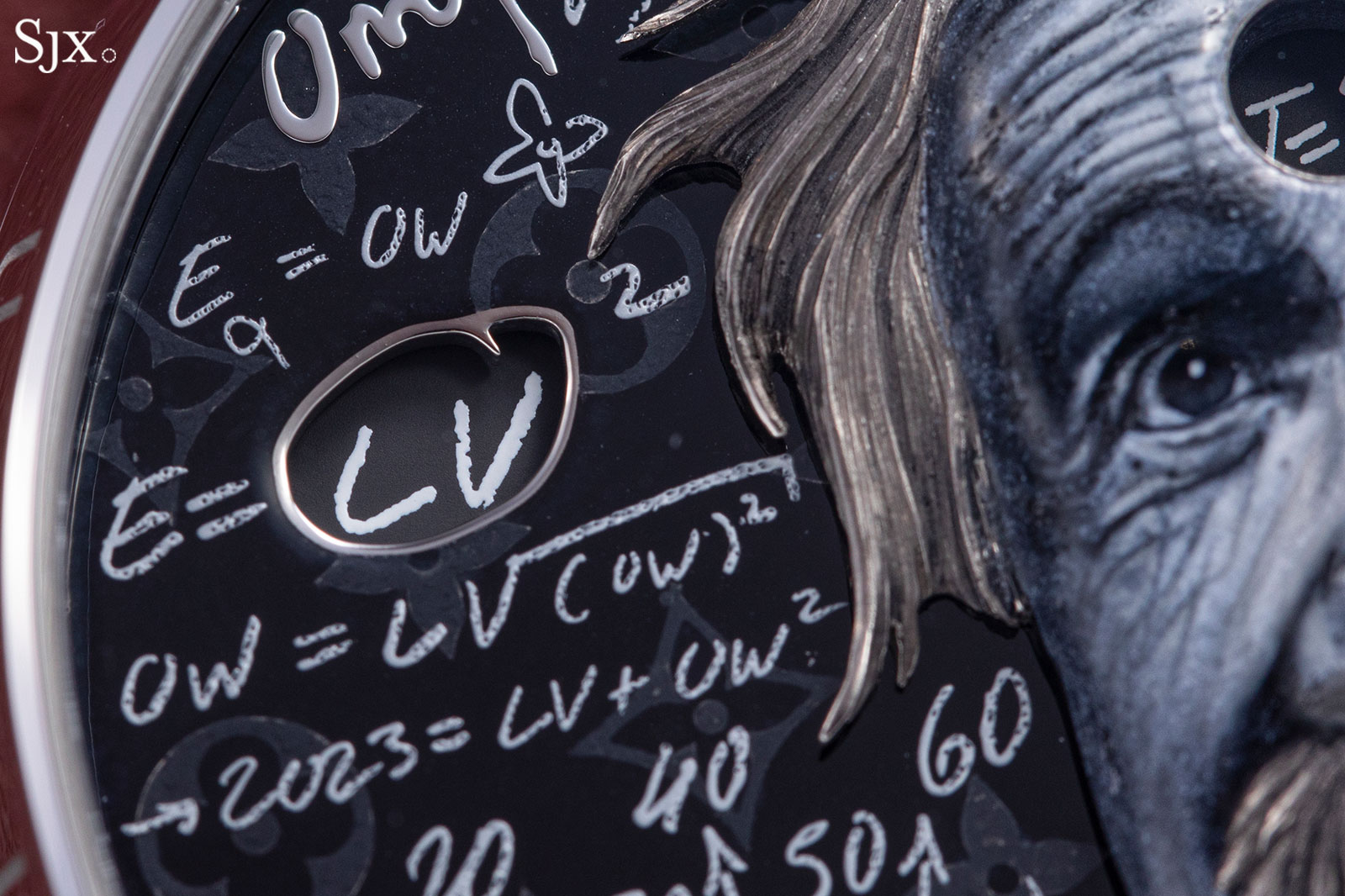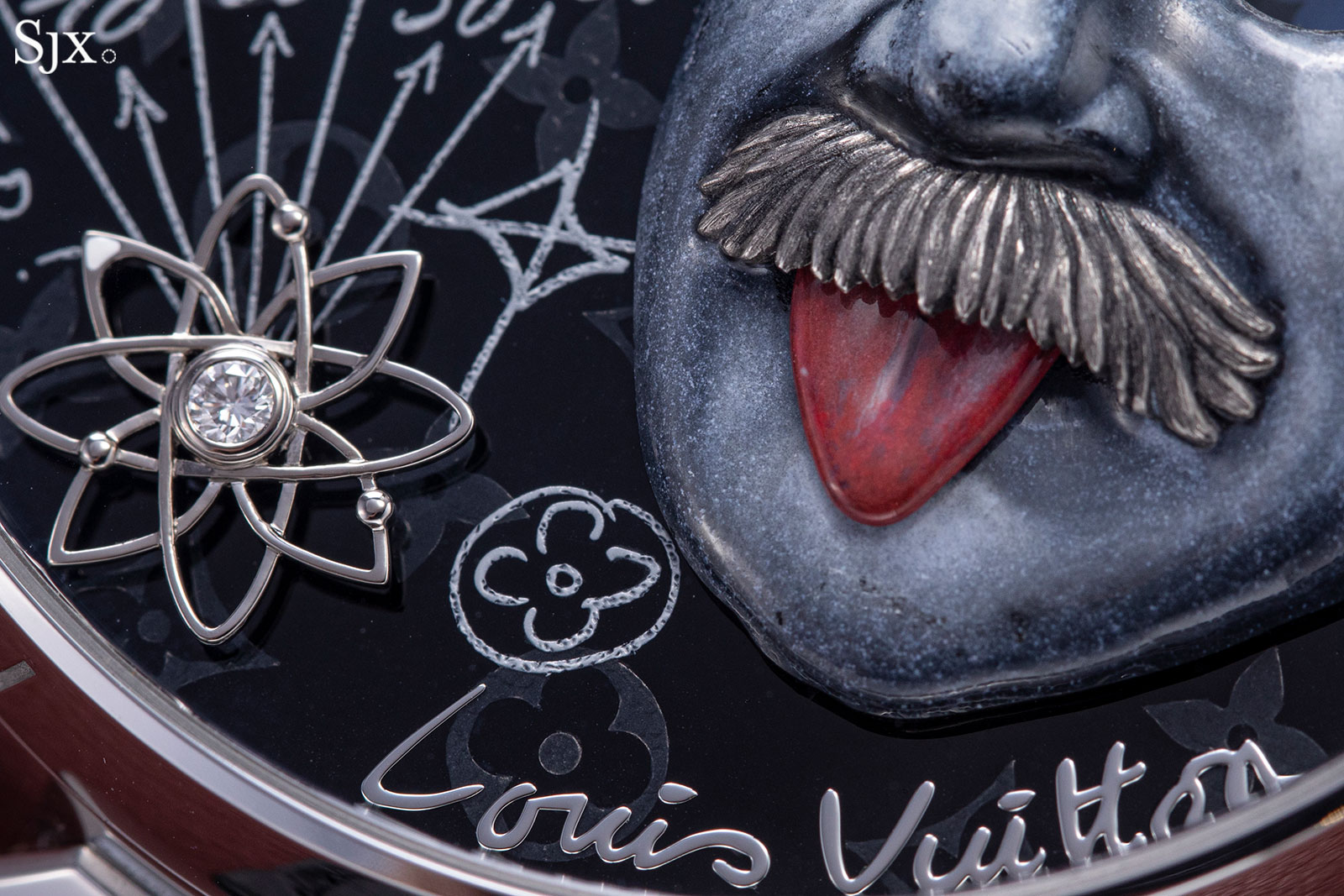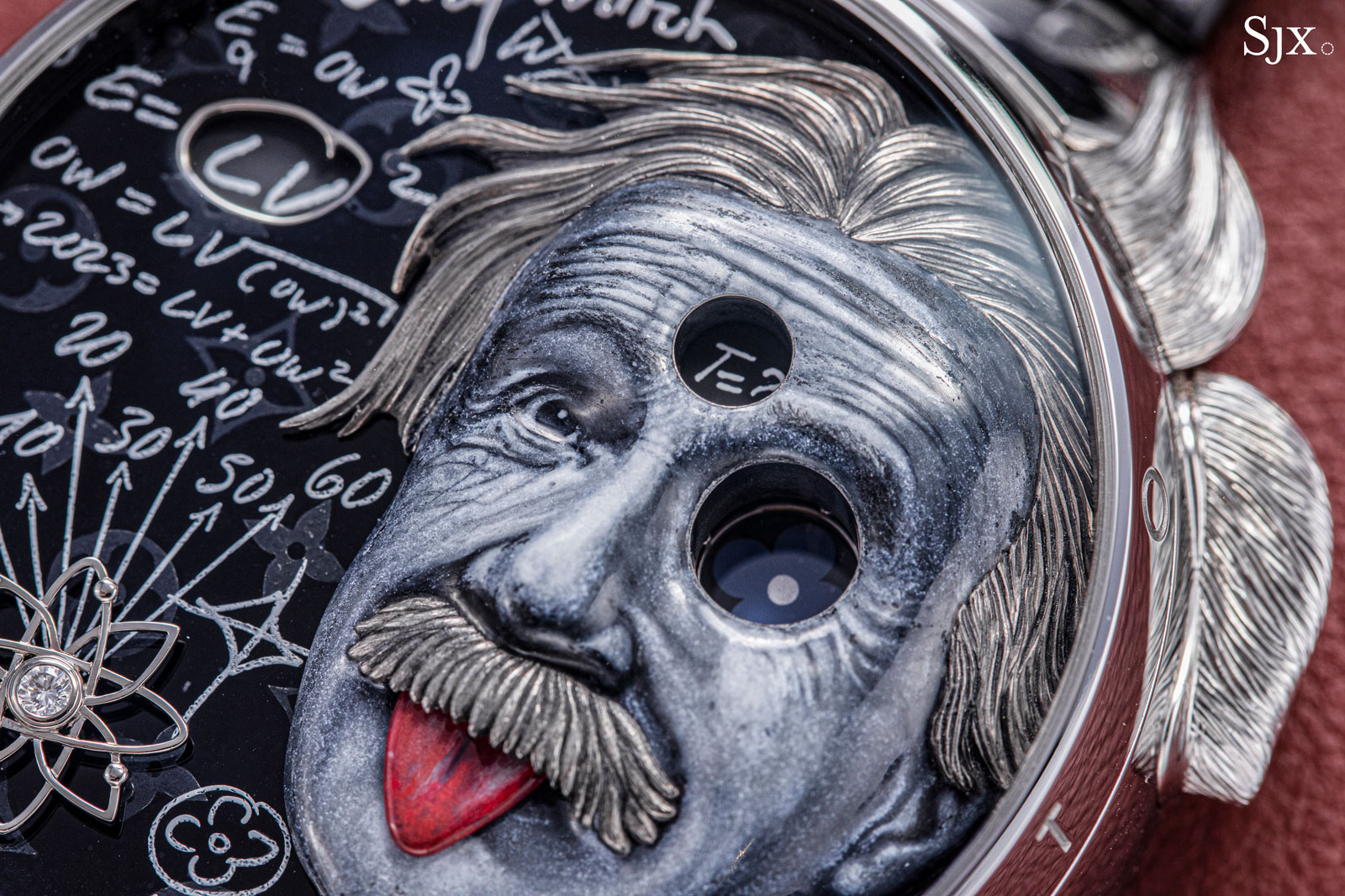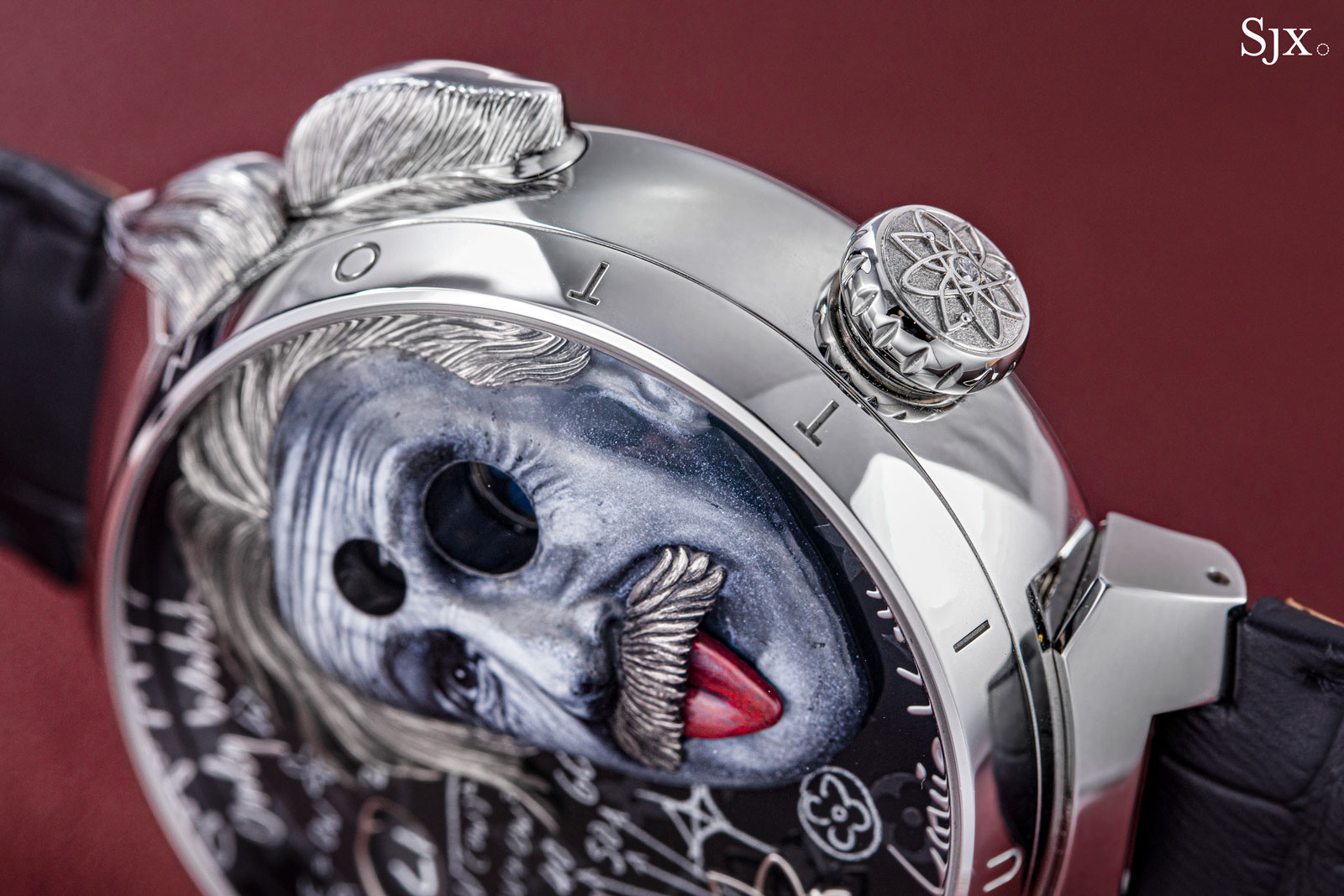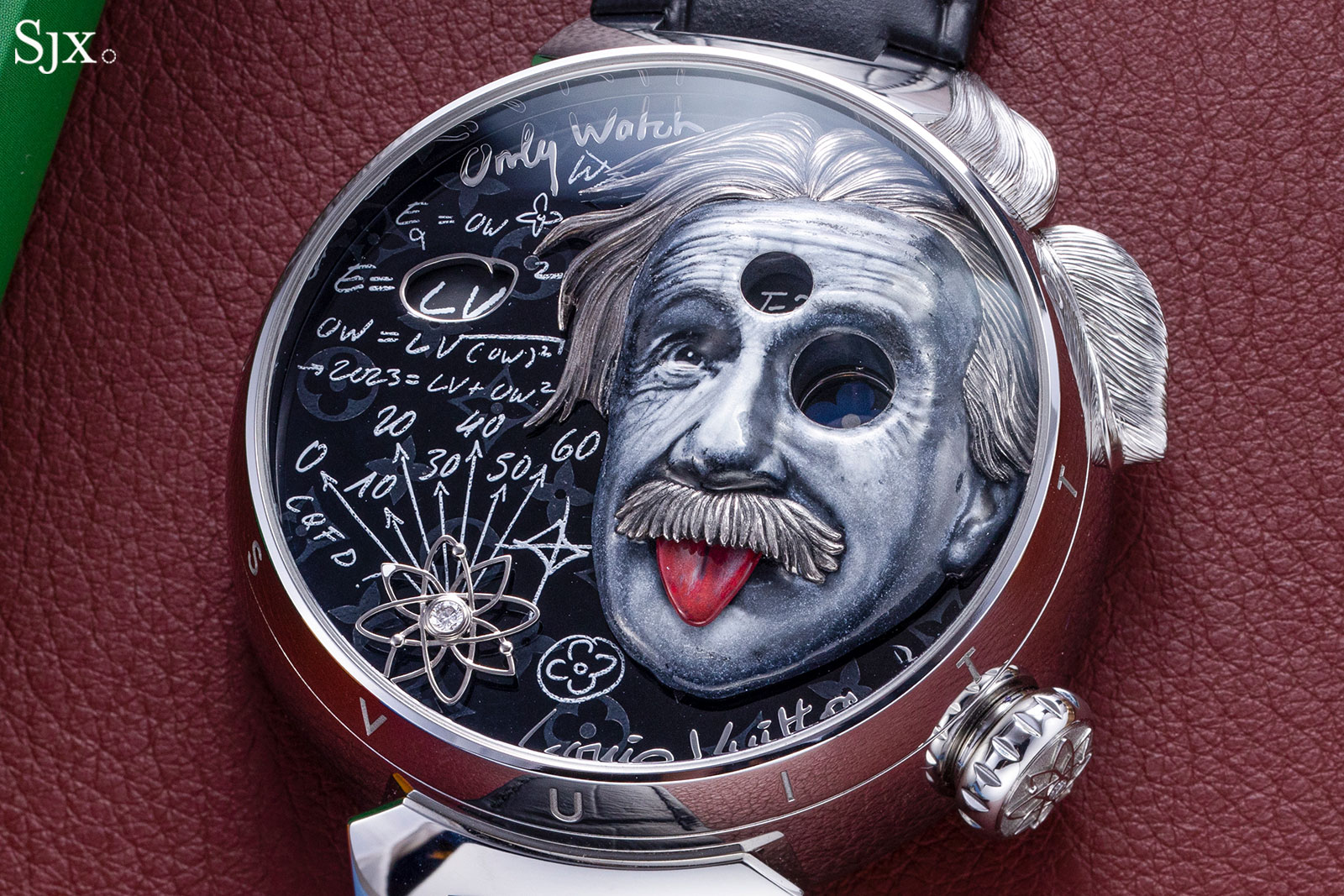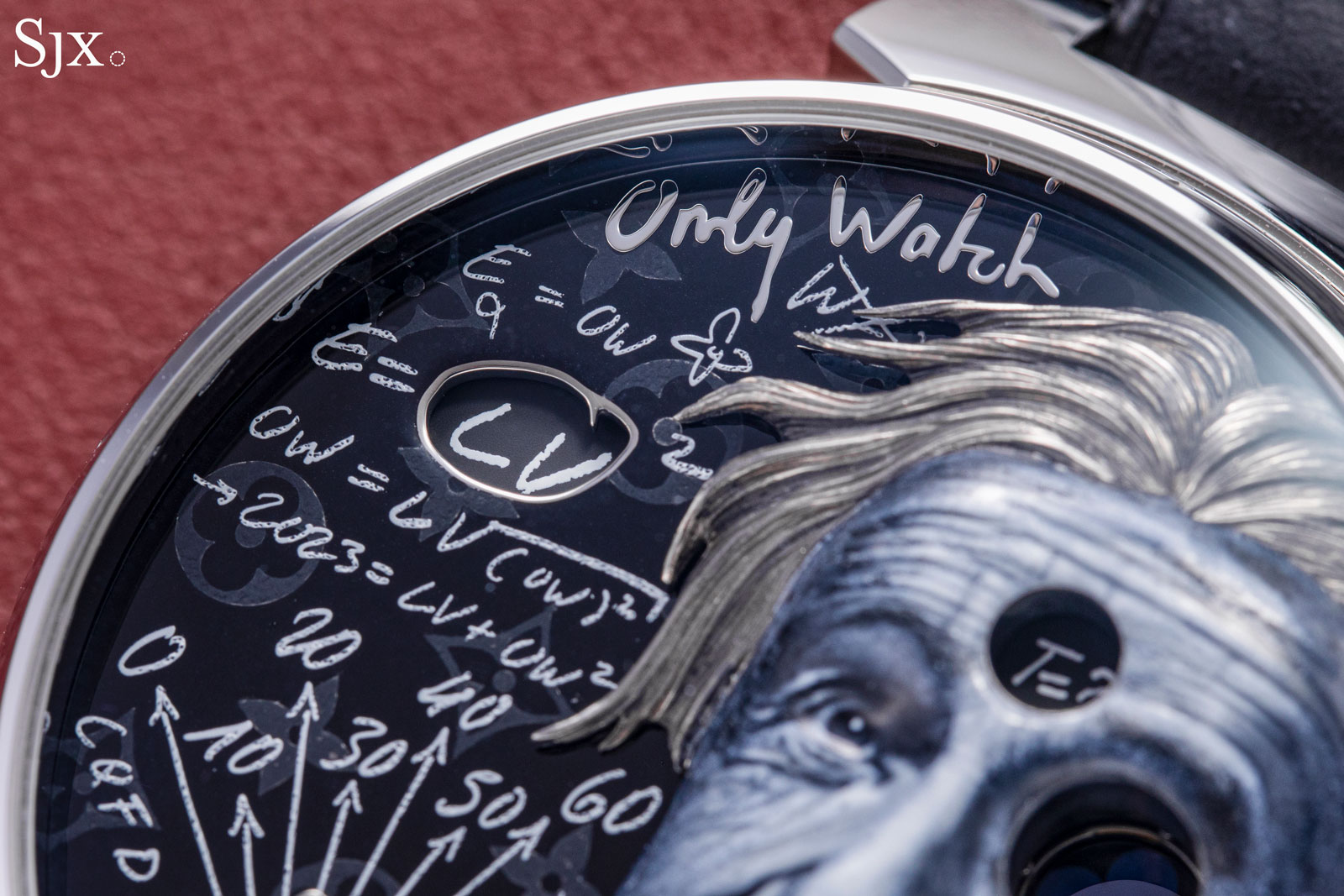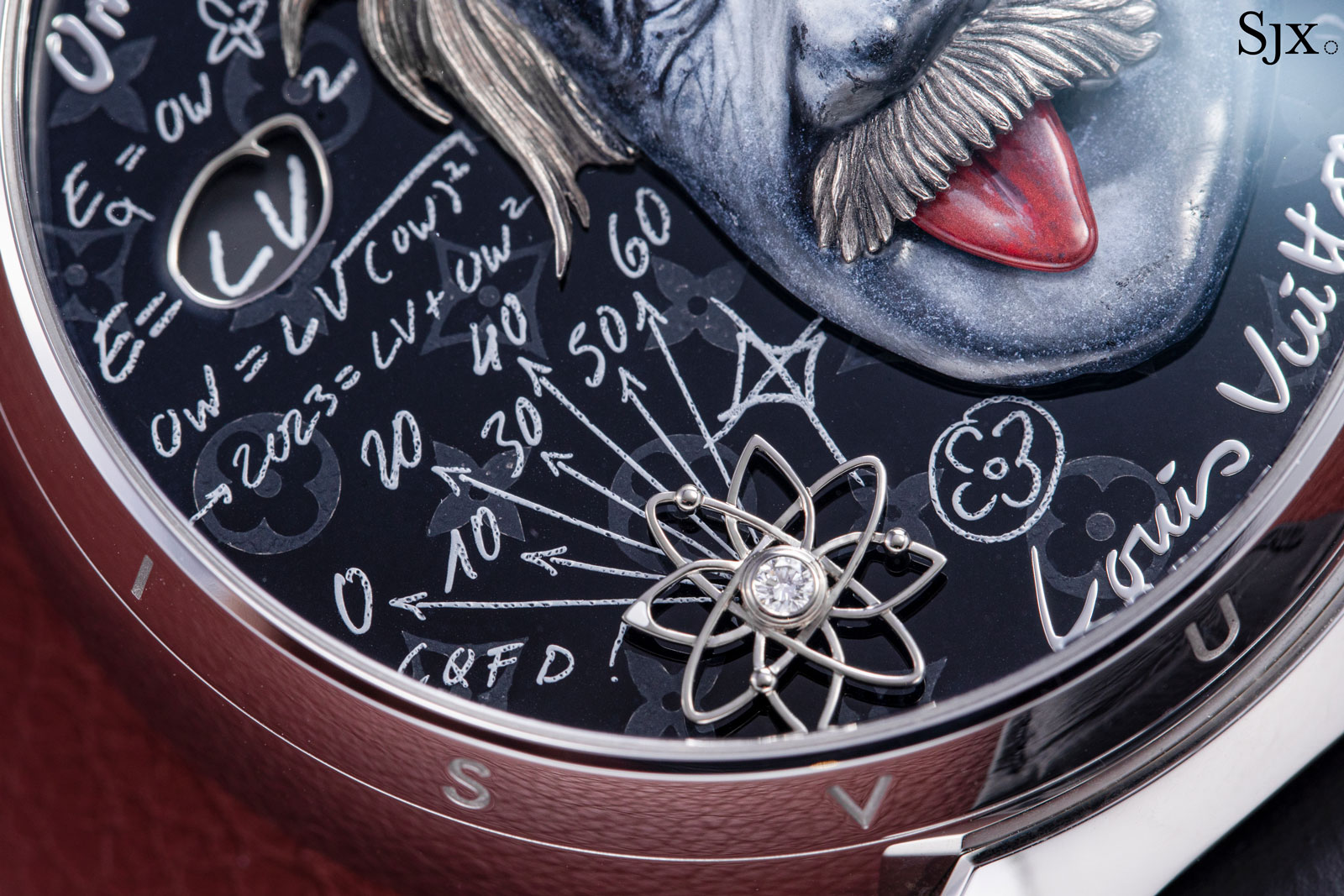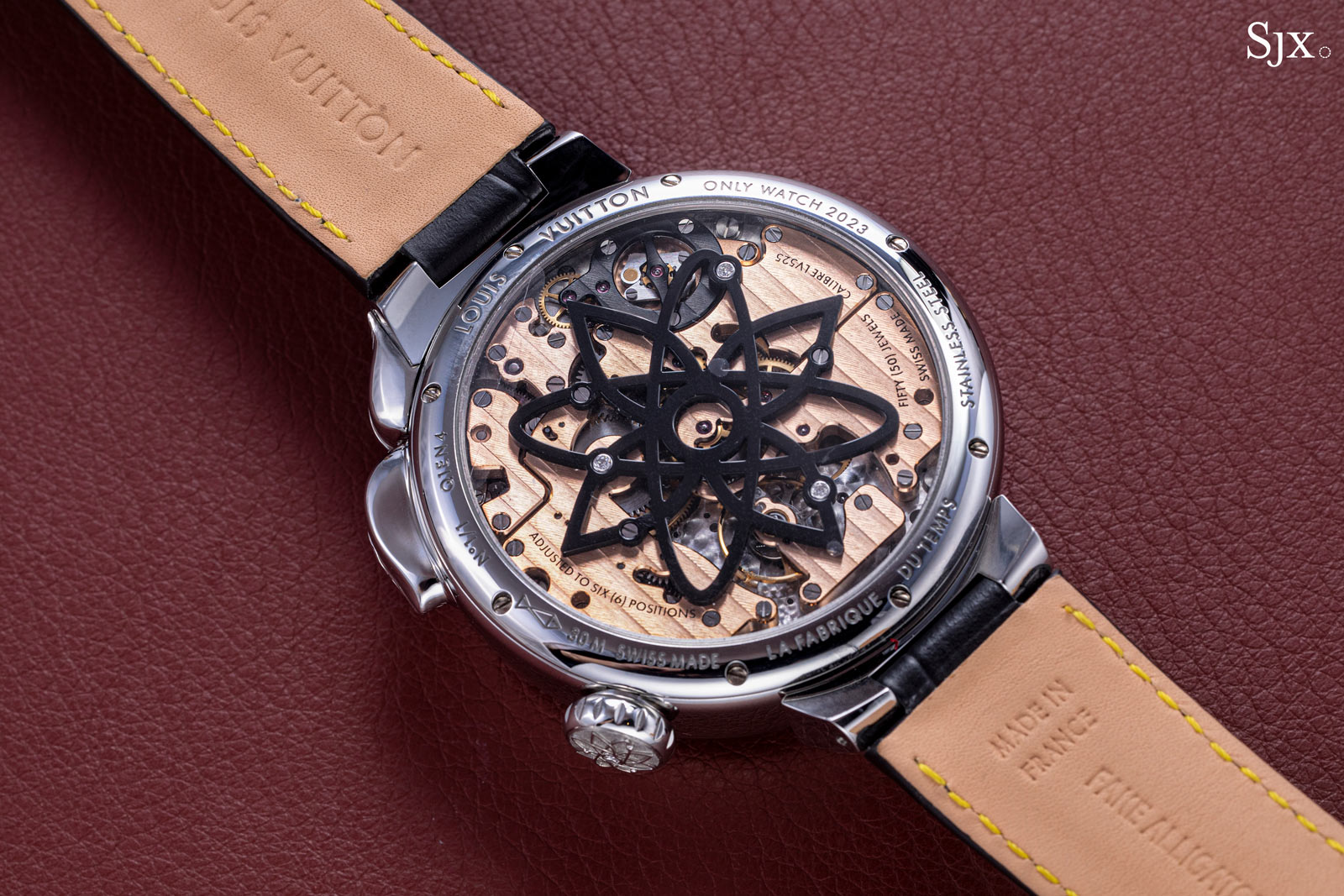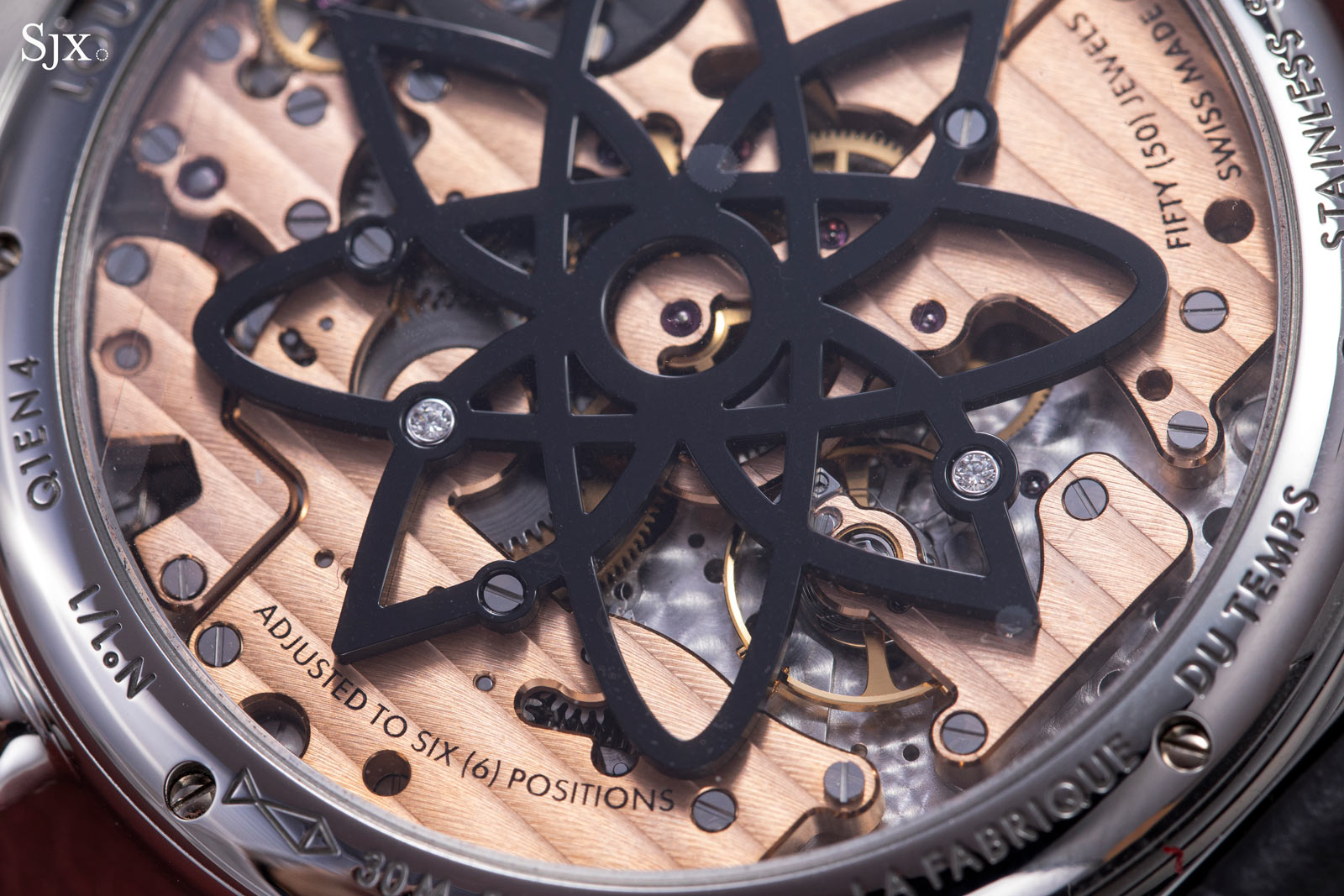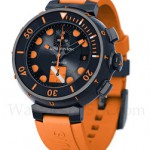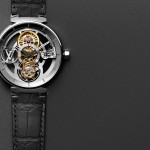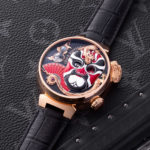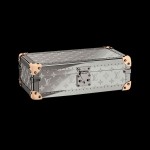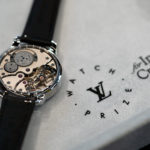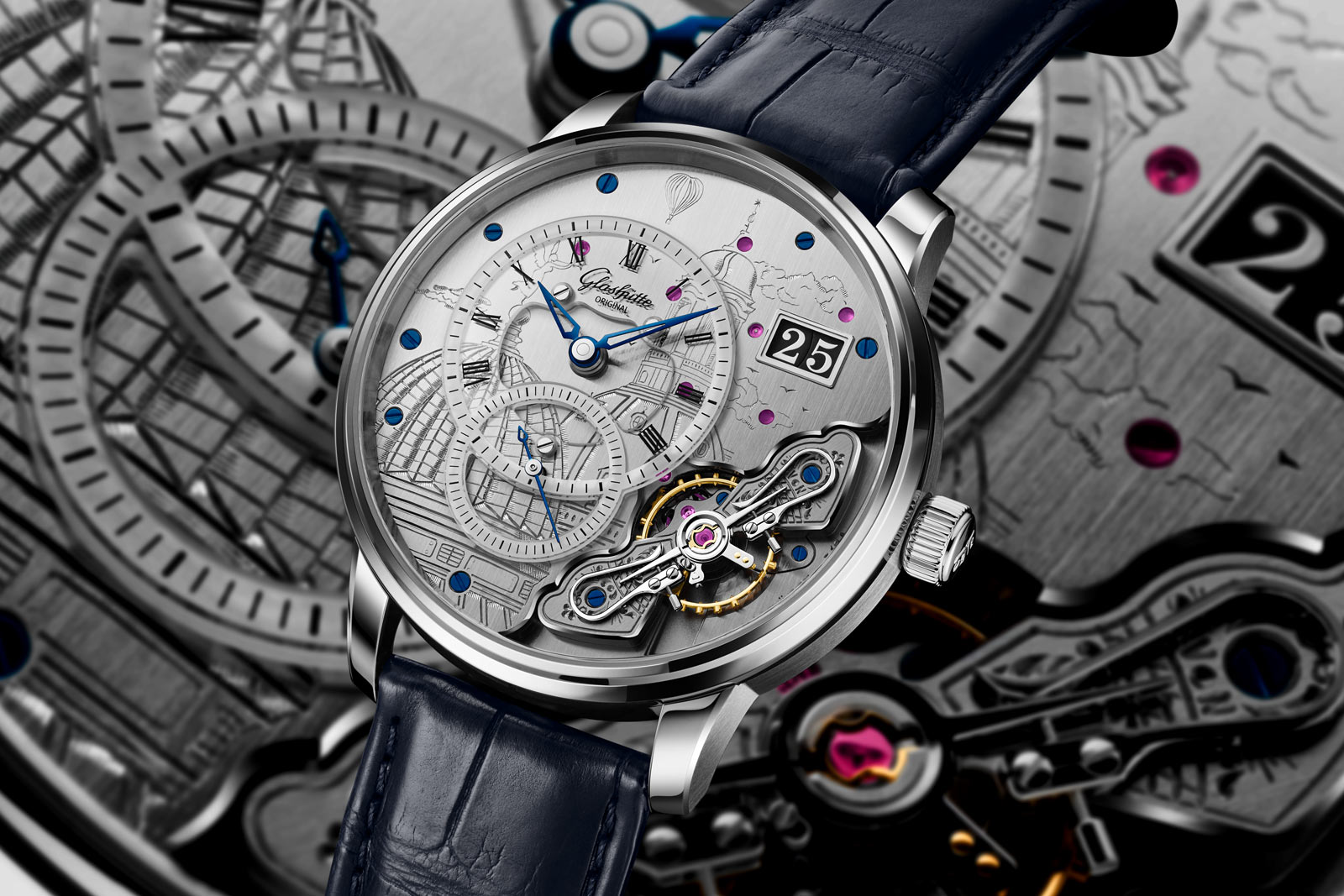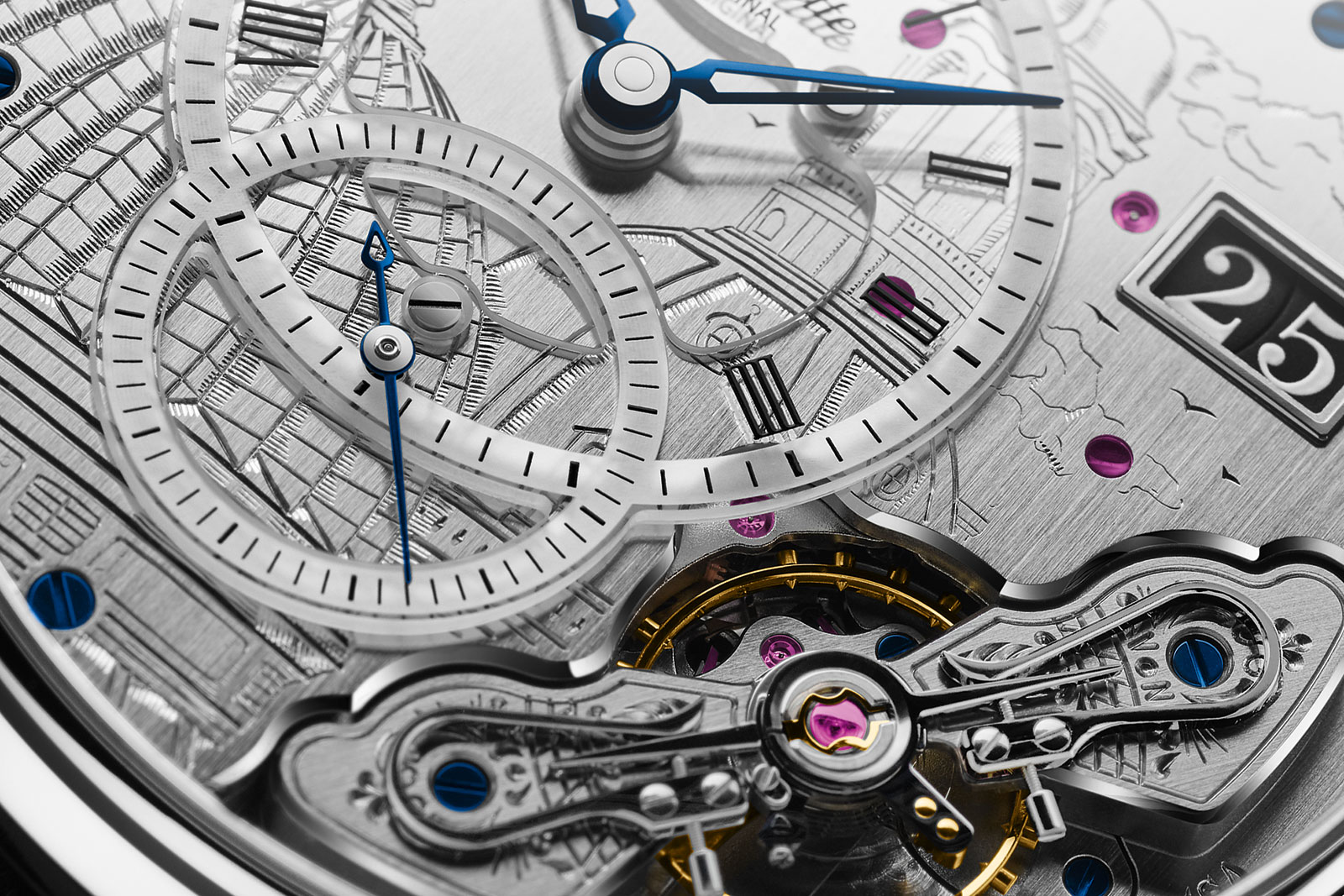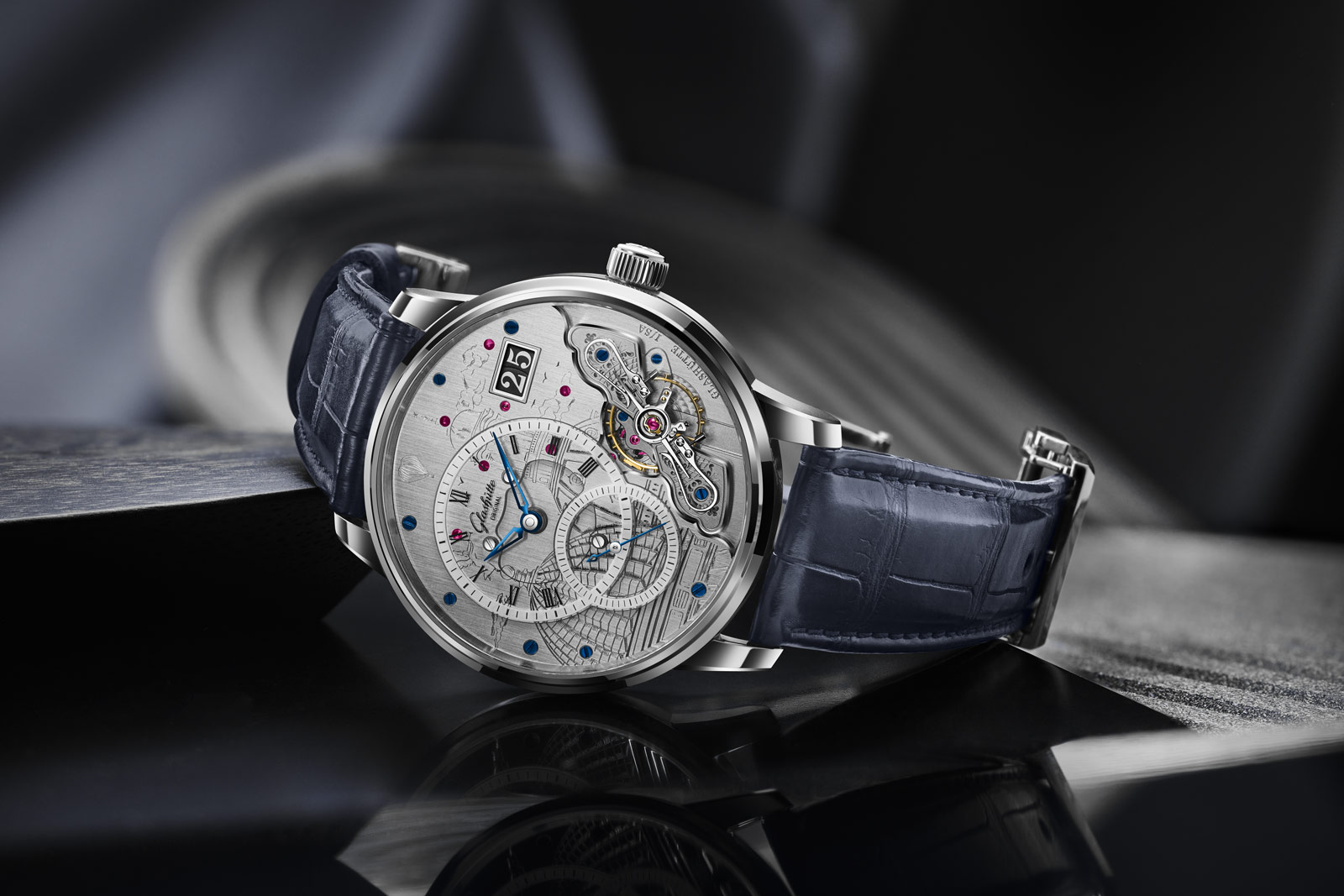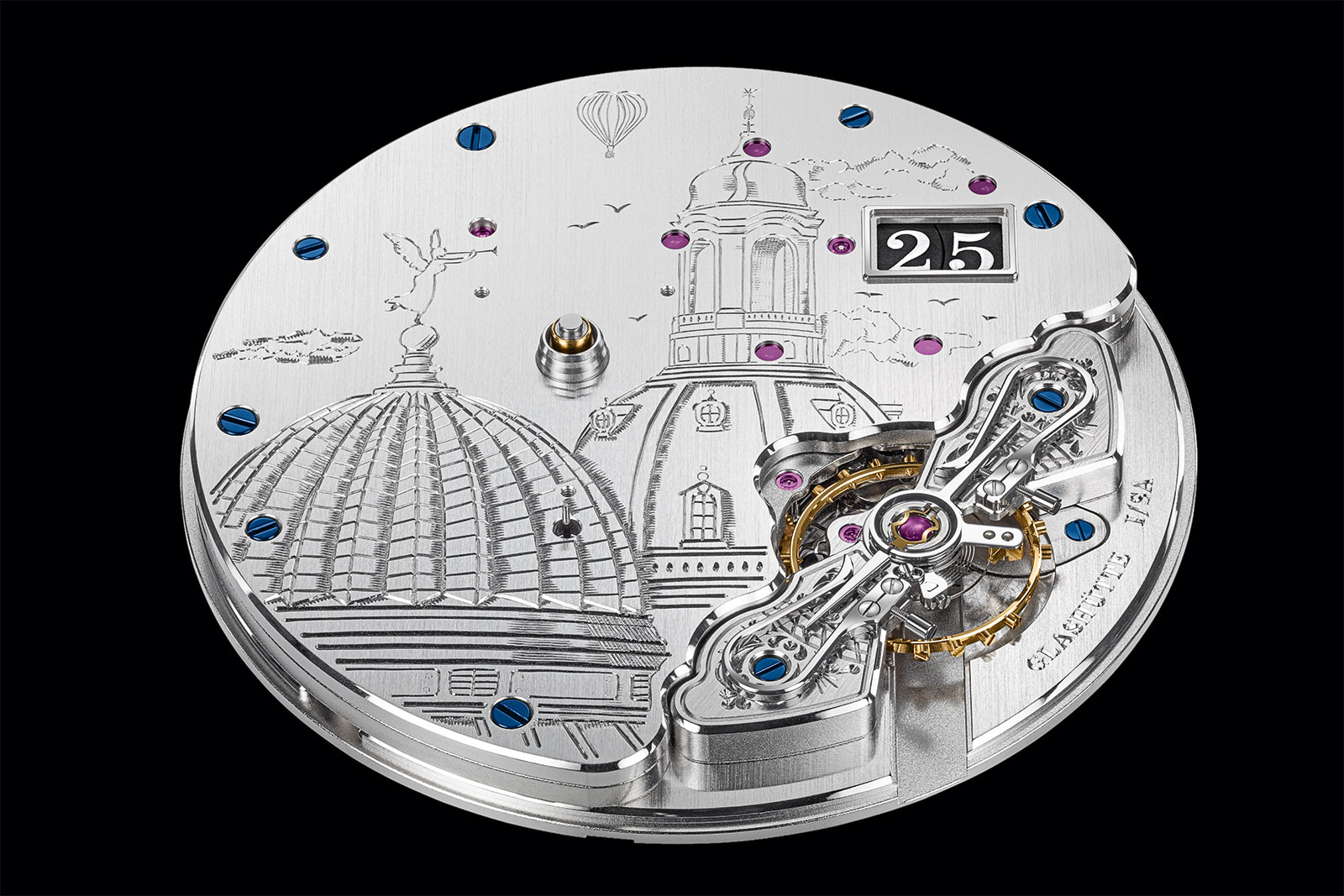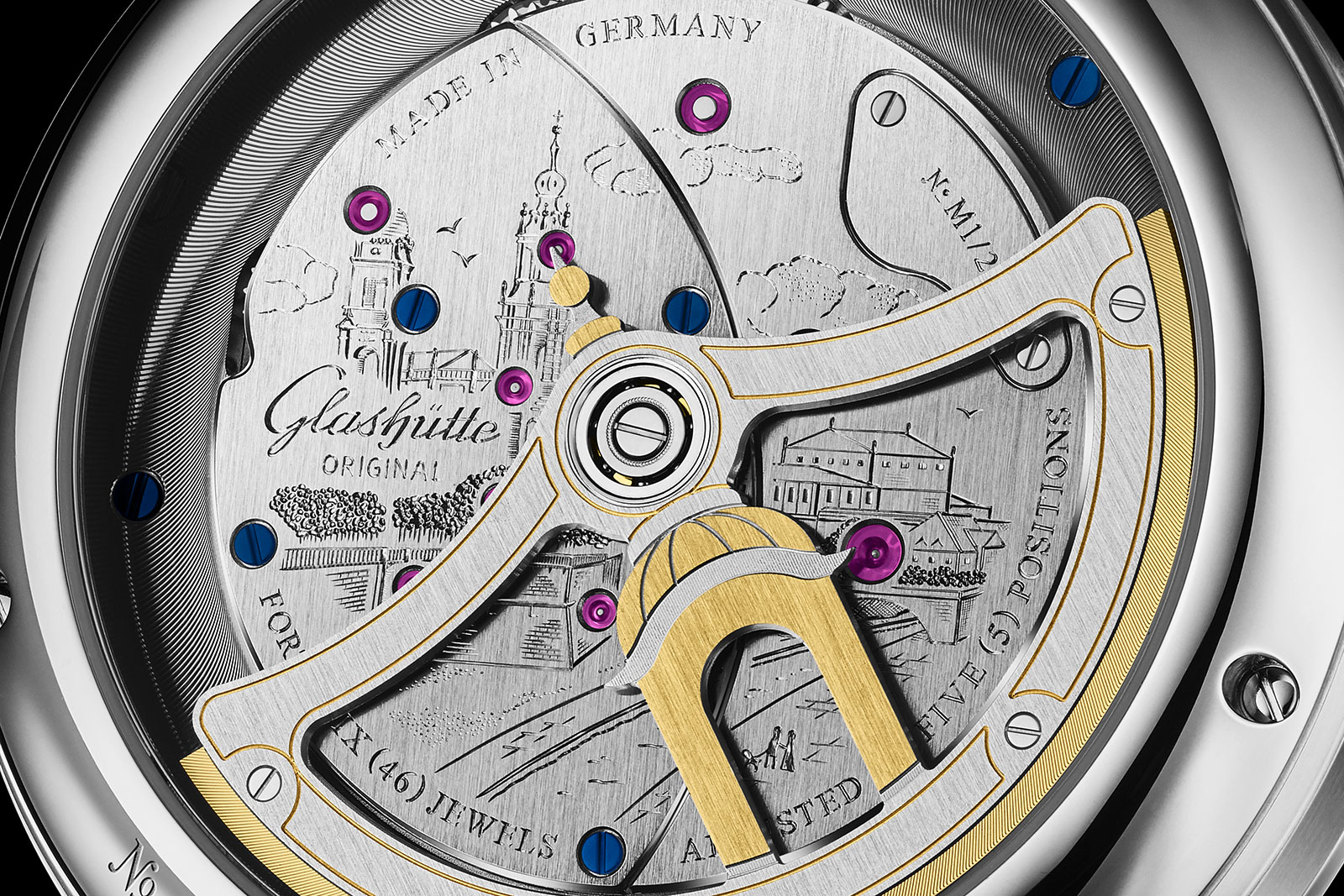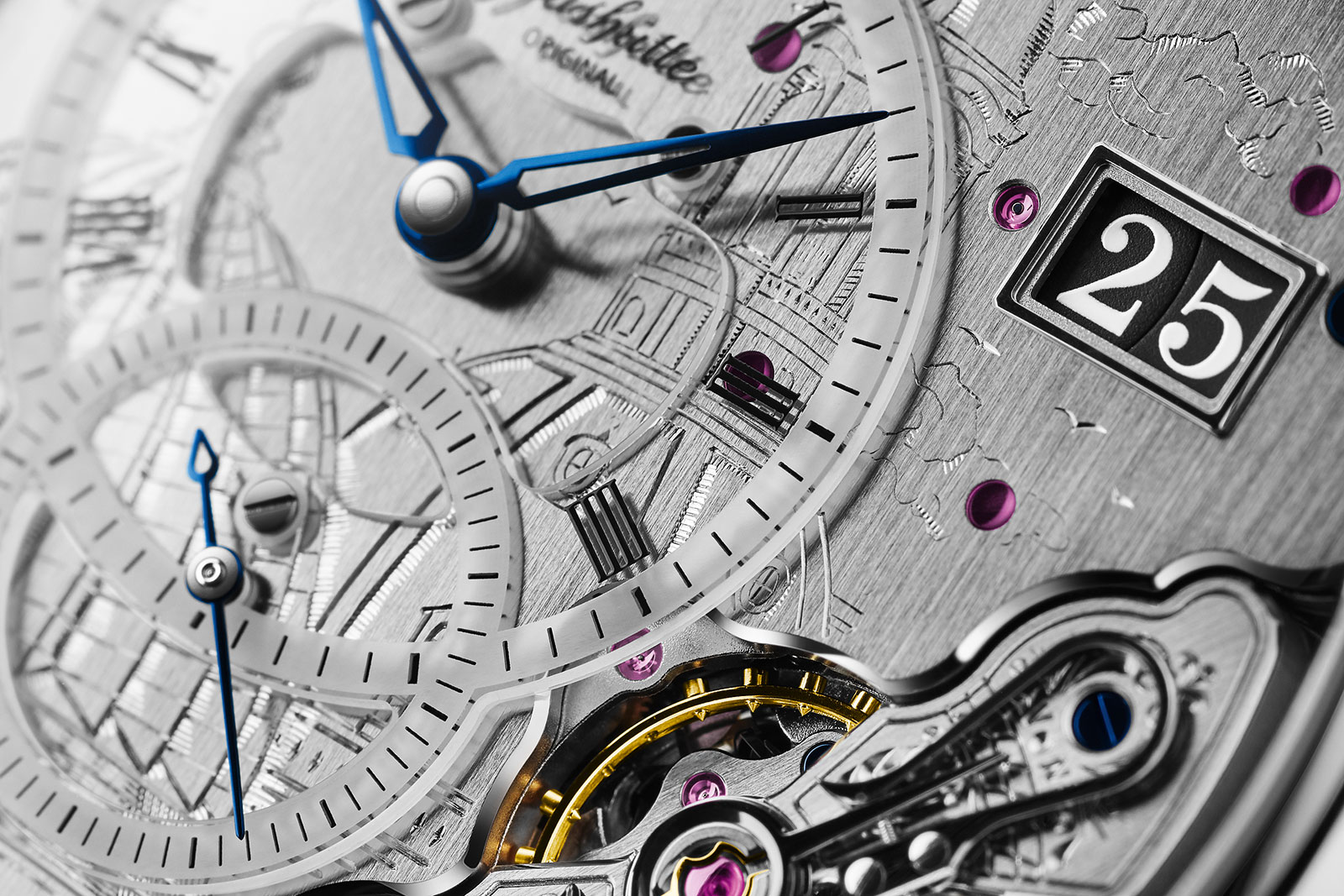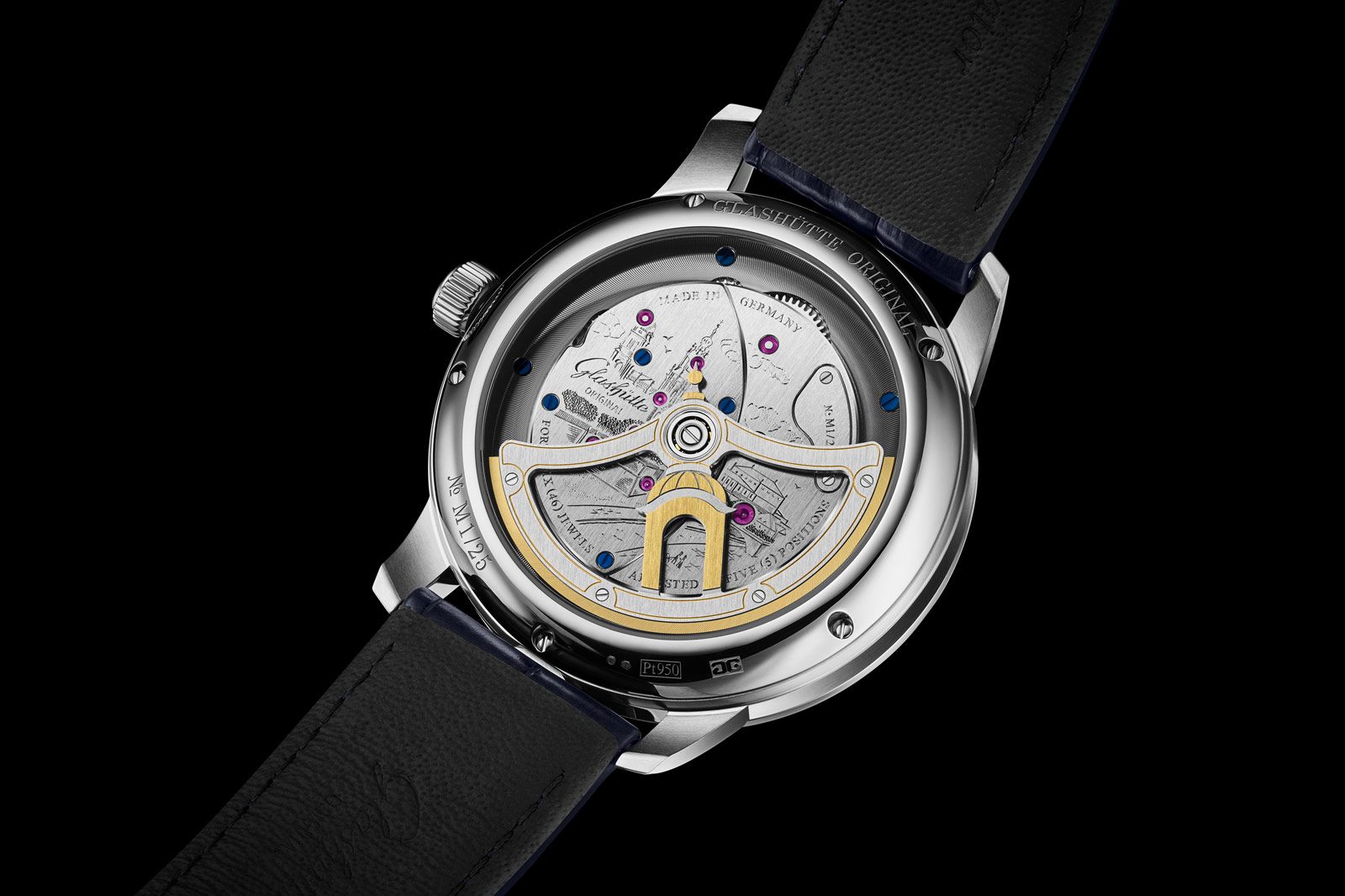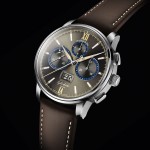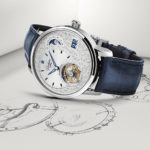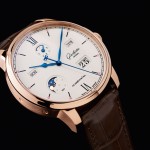Hands On: Piaget Altiplano Ultimate Concept Tourbillon 150th Anniversary
Wearing the thinnest tourbillon ever.
You can never be too rich or too thin – a quote attributed to Wallis Simpson, Duchess of Windsor, but it might as well have come from Piaget, which just debuted the thinnest tourbillon wristwatch in history, the Altiplano Ultimate Concept Tourbillon 150th Anniversary.
Covered in-depth at launch, the AUC Tourbillon is just 2 mm thick, including the case and crystal; that makes the watch thinner than a Swiss five-franc coin. While its record-breaking dimensions are headline-grabbing, it’s the watch’s overall design and ergonomics that make it look and feel almost miraculous on the wrist.
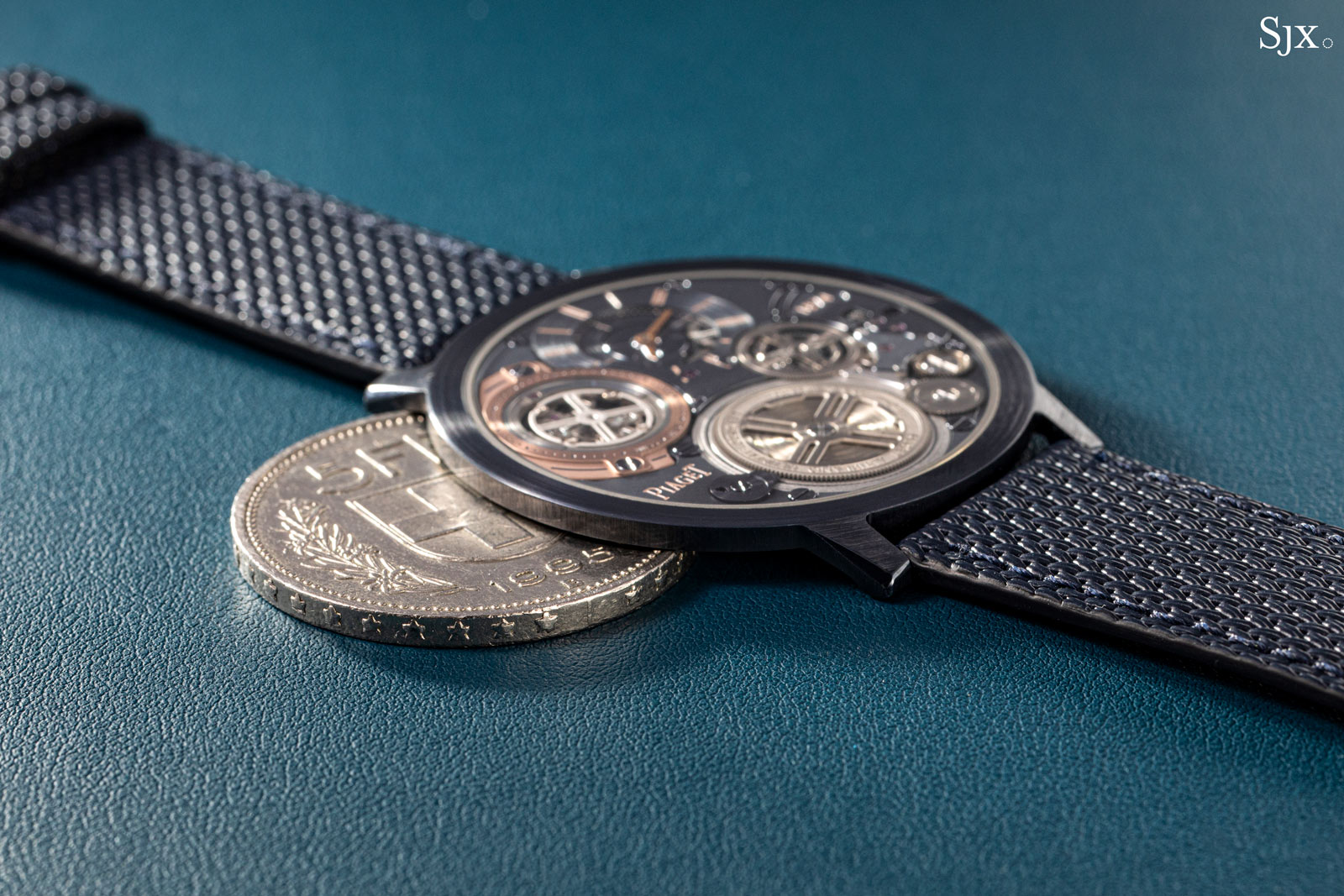
The AUC Tourbillon next to the five-franc coin; it’s also slimmer than the two-franc coin, and equivalent to about 20 sheets of A4 printer paper
Initial thoughts
Record-chasing, whether in terms of thickness, weight, water resistance, or complications, is a common theme in the watch industry, but the results are often gimmicky and impractical. When I heard that Piaget would be introducing the thinnest tourbillon in history, I rolled my eyes. But my perspective changed as soon as I picked up the AUC Tourbillon, a moment that stands out in my memory as a highlight of Watches & Wonders 2024.
The watch is thin, of course, but the immediate impression is one of substance; it feels far more substantial than it looks. This is in part due to the M64BC cobalt alloy case, the extreme rigidity of which makes the watch’s 2 mm thinness possible.
Furthermore, the ergonomics of the case, which is a 41.5 mm in diameter and features slightly downturned lugs, help the watch wear like any normal watch. Though seemingly trivial, the lugs are particularly significant as they contribute to the normality of the watch. On the original concept watch, the lugs extended straight out from the case, giving it an odd fit on the wrist.
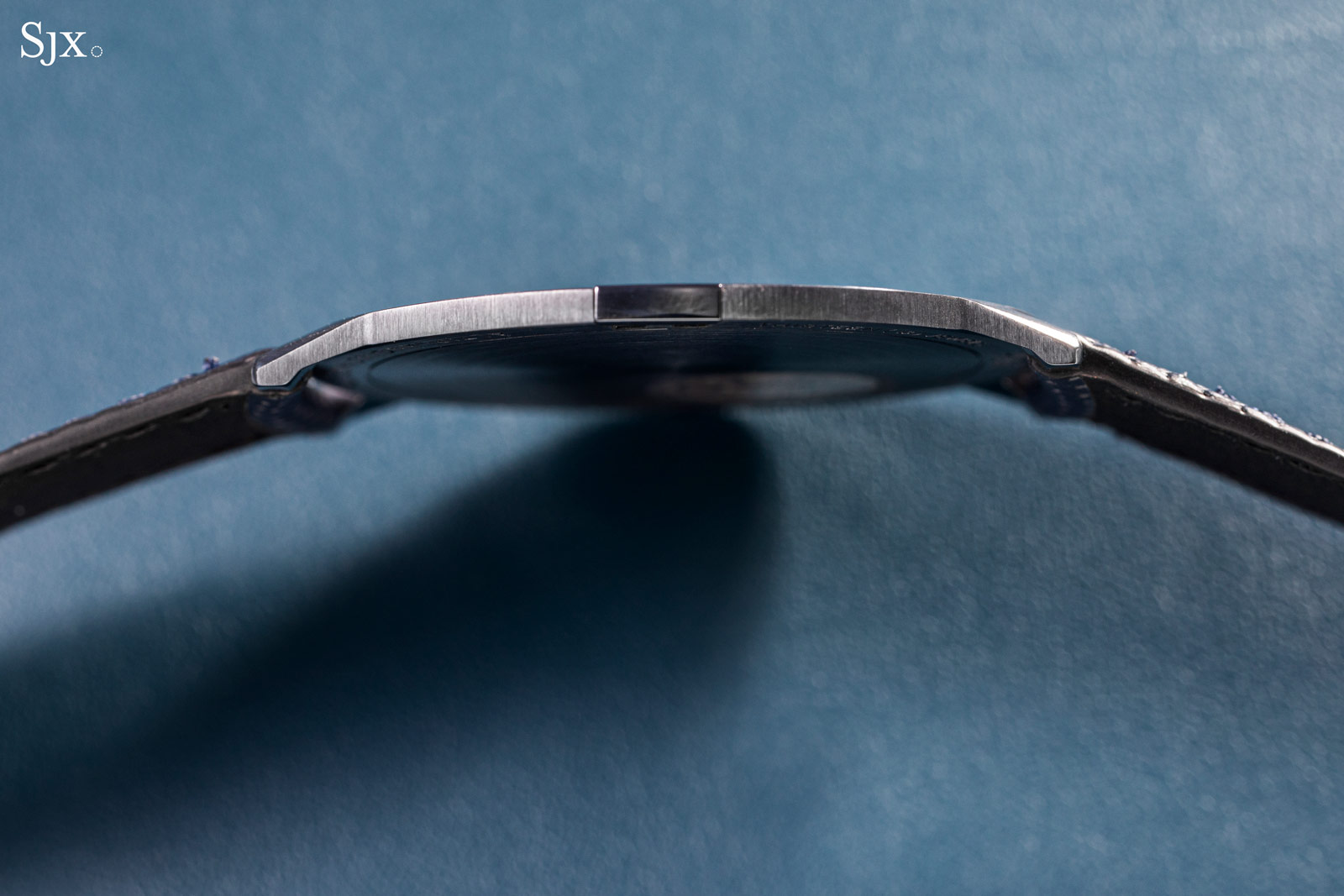
Even reading the time feels normal, even if the dial is on the small side. The hour and minute hands are stacked as in a normal watch, and not distributed to separate sub-dials as is the case with ultra-thin record-breakers from Bulgari and Richard Mille.
This juxtaposition of normality and insanity is what makes the AUC Tourbillon special; more-so than if its design had been as crazy as its dimensions. And it had better be special, since the price is over CHF600,000. Never too rich or too thin, I suppose.
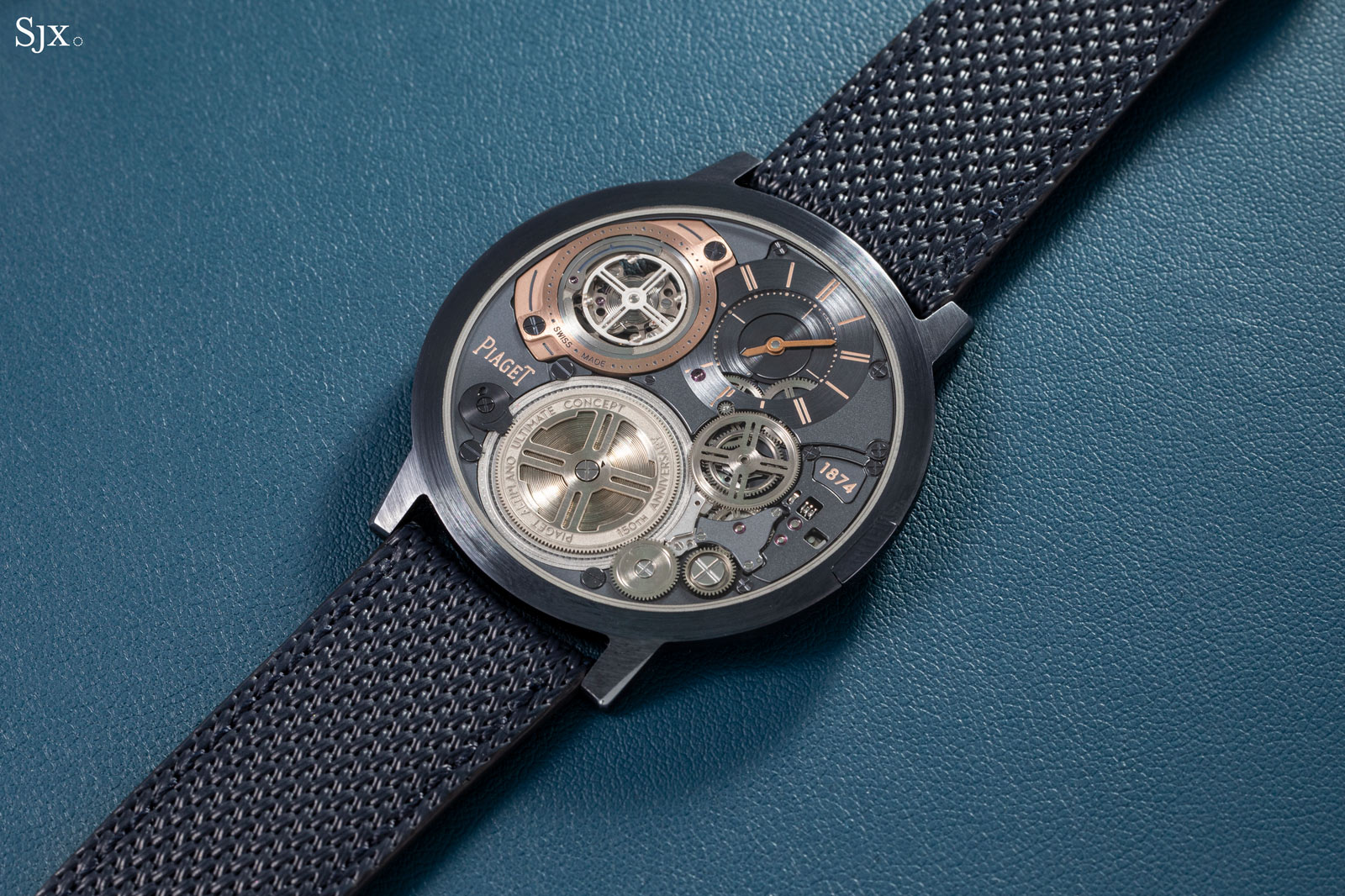
Thin is in
Ultra-thin watches have long been a Piaget specialty, dating back to 1957 when the brand introduced the caliber 9P, which was just 2 mm thick. While records for ultra-thin watches have been held at various times by numerous brands, Piaget has always been near the top of the pack in the quest for ultimate slimness. These efforts culminated in the 2021 launch of the Altiplano Ultimate Concept, which set a new record at just 2 mm in total thickness, including the case and crystal.
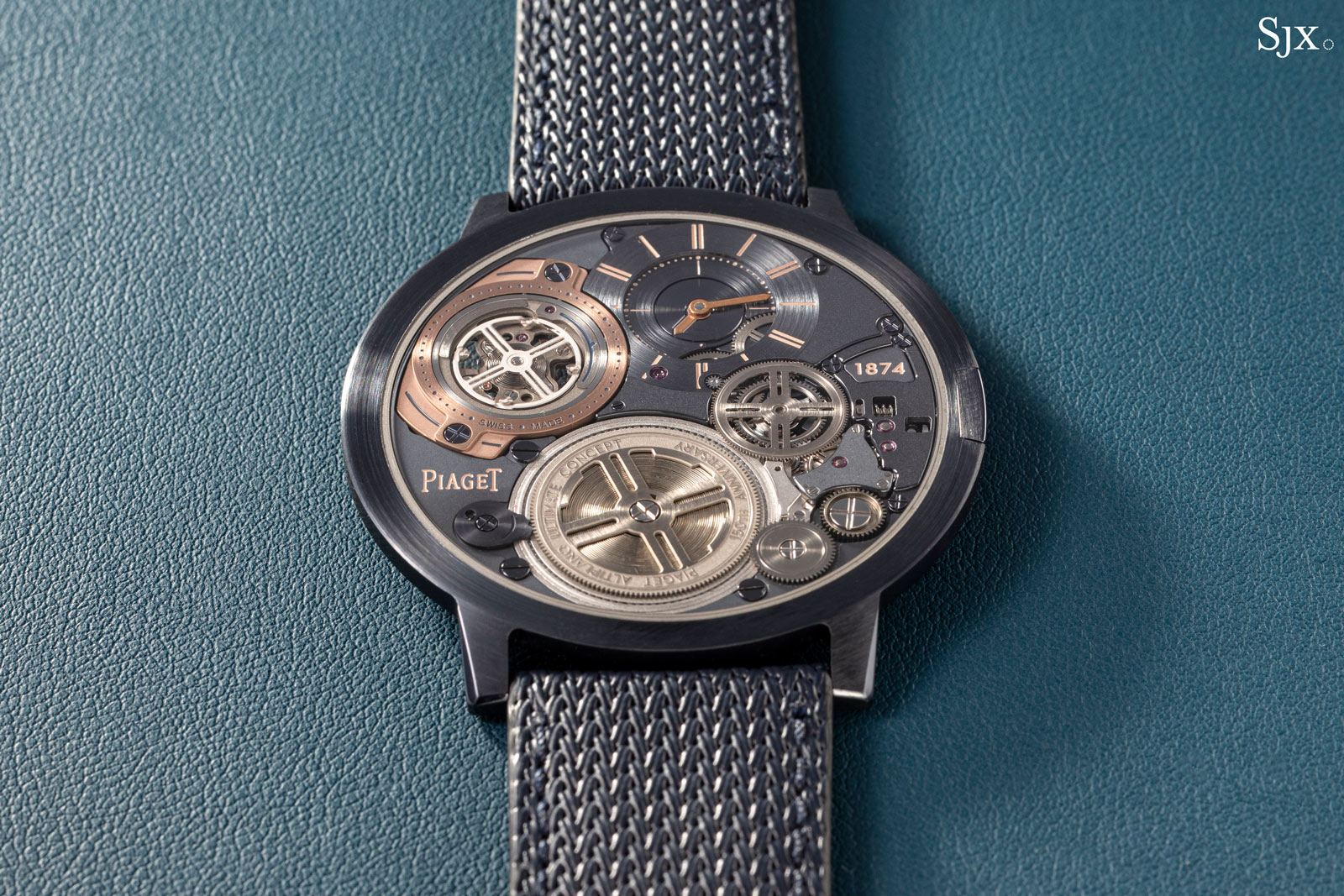
More recently, Bulgari has invested heavily to become a leader in ultra-thin watches, setting record after record. In fact, Bulgari is once again the overall record-holder for the thinnest (non-tourbillon) watch ever, with its latest Octo Finissimo Ultra COSC, which at just 1.7 mm thick, dethroned 2022’s surprising entry from Richard Mille (although rumour has it Richard Mille has an even thinner watch in the pipeline).
But what Piaget has managed to do is arguably more impressive, fitting a flying tourbillon and a traditional dial layout, with hours and minutes displayed on the same dial, into something that is thinner than a coin but looks, feels, and operates like a normal watch.
Arguably the only aspect that isn’t quite normal is the flat crown, which winds the mainspring by means of a worm screw visible at three o’clock. While the watch can be hand-wound, a purpose-built winding tool is supplied with the watch to make it easier. The winding tool slides over the crown on the outside of the case, enabling the user to wind the watch by turning the larger barrel of the tool.
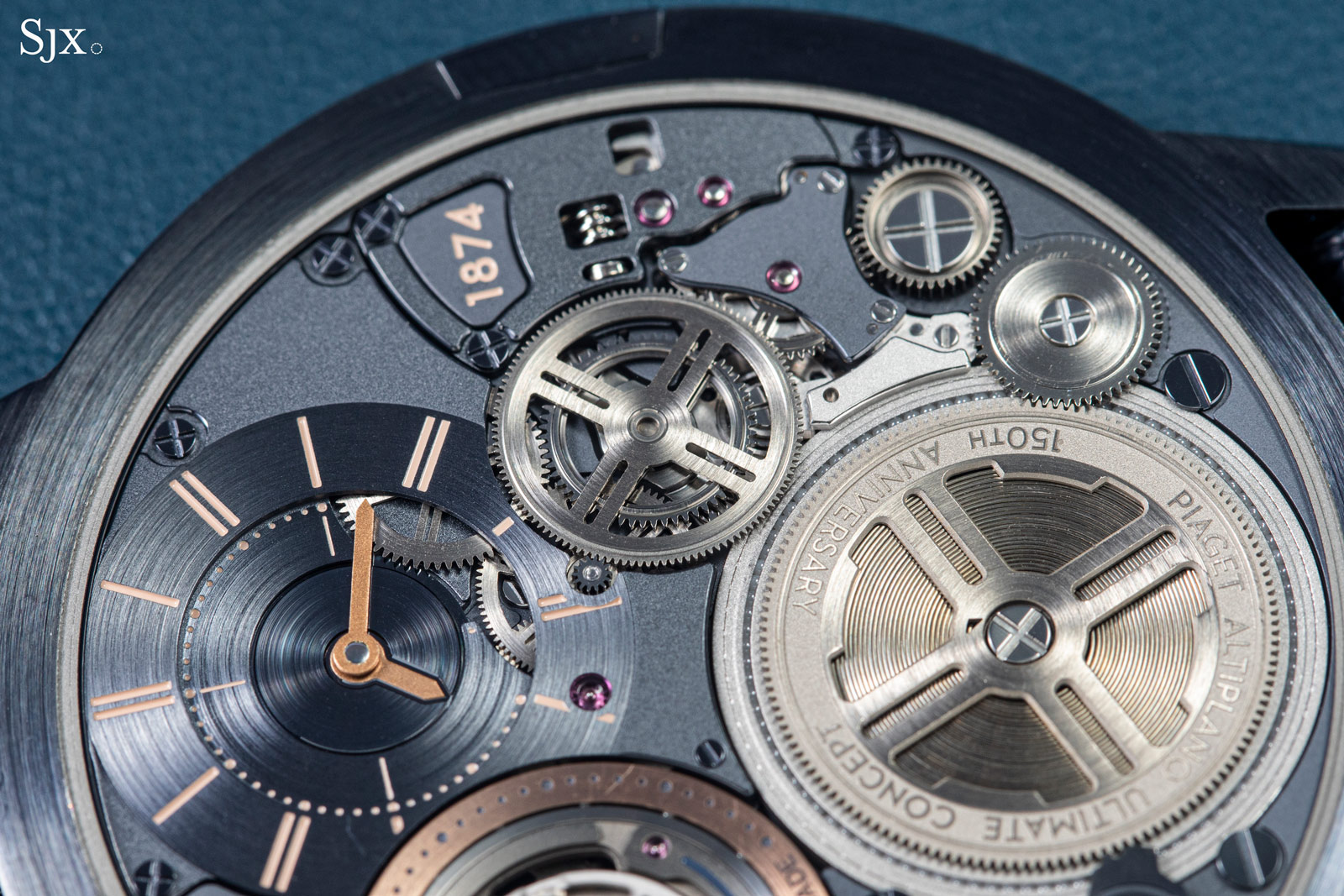
An unusual view
Unlike other ultra-thin record holders, the AUC Tourbillon offers something else typical of a normal luxury watch: a sapphire crystal case back. Or, if not a case back, at least a small porthole. Though it offers only a partial view of the movement, a necessity of the fact that much of the case back serves as the baseplate for the movement, the display back reveals everything that it needs to: the unusual flying tourbillon.
In fact, the tourbillon is actually flying on both sides, rotating within a large ball bearing around its rim. Furthermore, the balance wheel is also flying, with the balance roller oscillating in a ball bearing of its own. These solutions were required to minimise the height of the movement, but the secondary effect is visual; it’s like having x-ray vision.
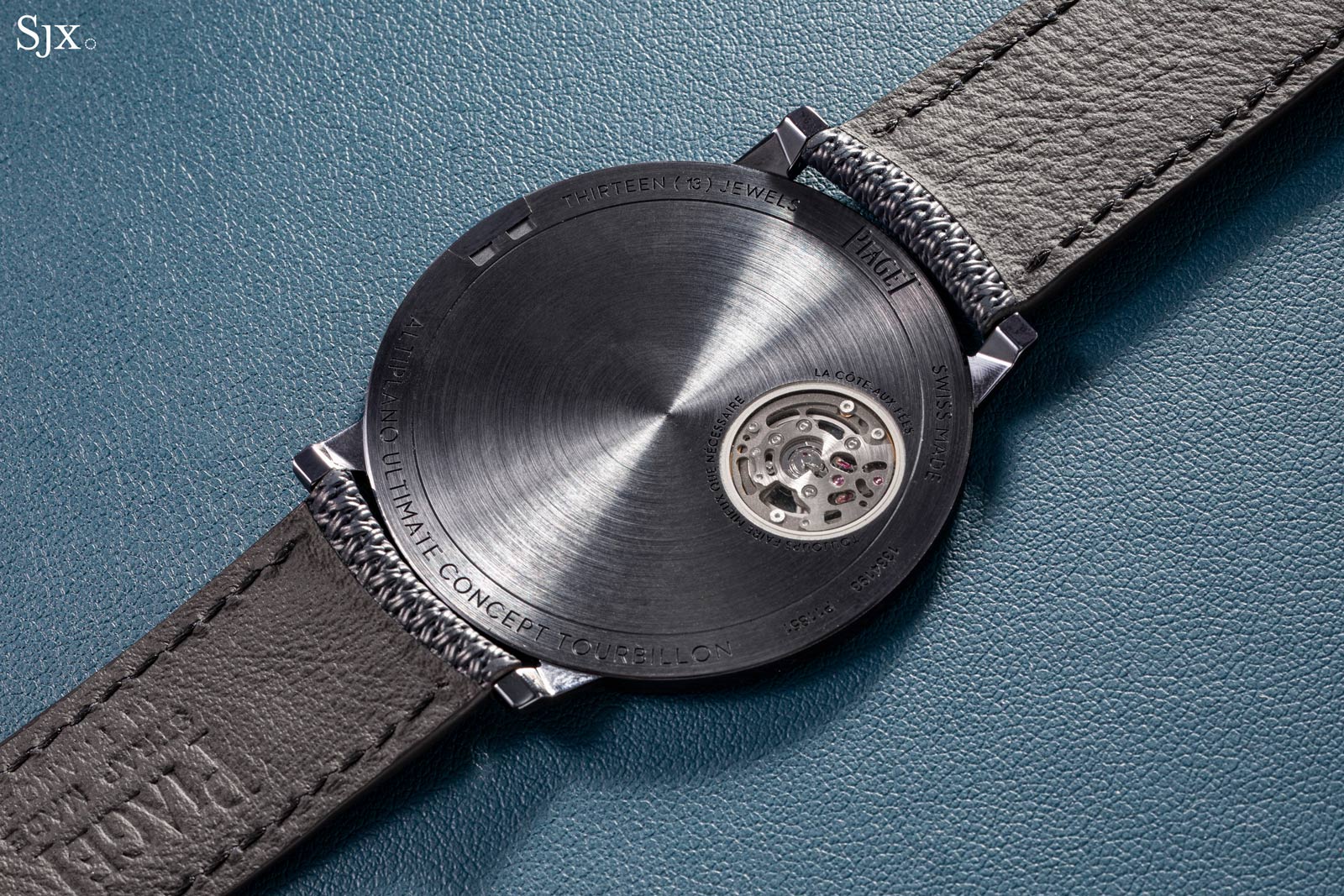
This is particularly apparent through the case back window, which affords a view of the underside of the balance roller. This view is impossible with a traditional construction with jeweled pivots. Naturally, even the case back window itself is remarkably thin, made of a sapphire crystal disc that is a mere 0.16 mm thick. Up close, the effect is striking; it looks like you can reach out and touch the tourbillon.
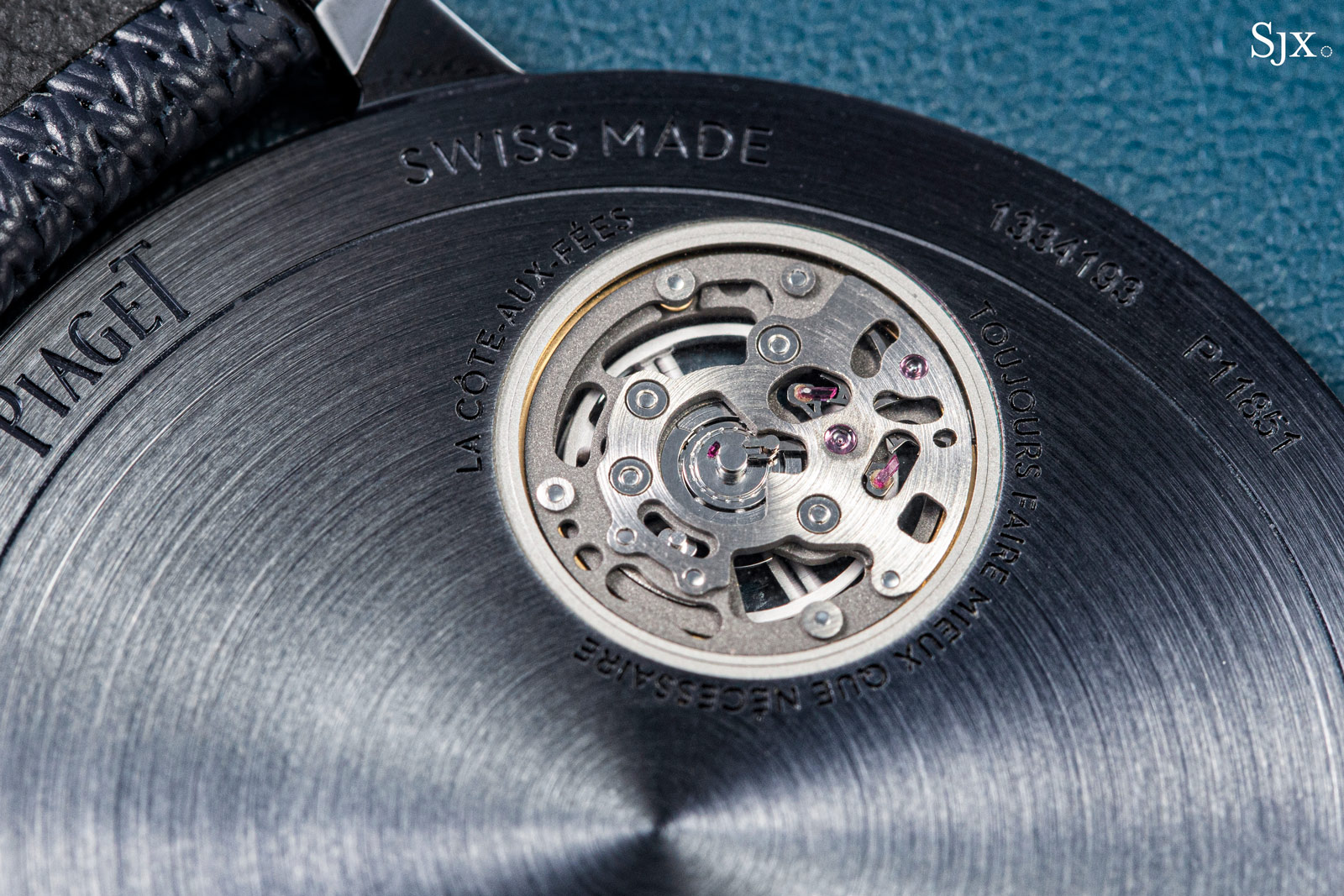
Due to the limited space available, Piaget eliminated the curb-pin regulator that it typically uses on its tourbillon watches, opting for a superior free-sprung balance instead.
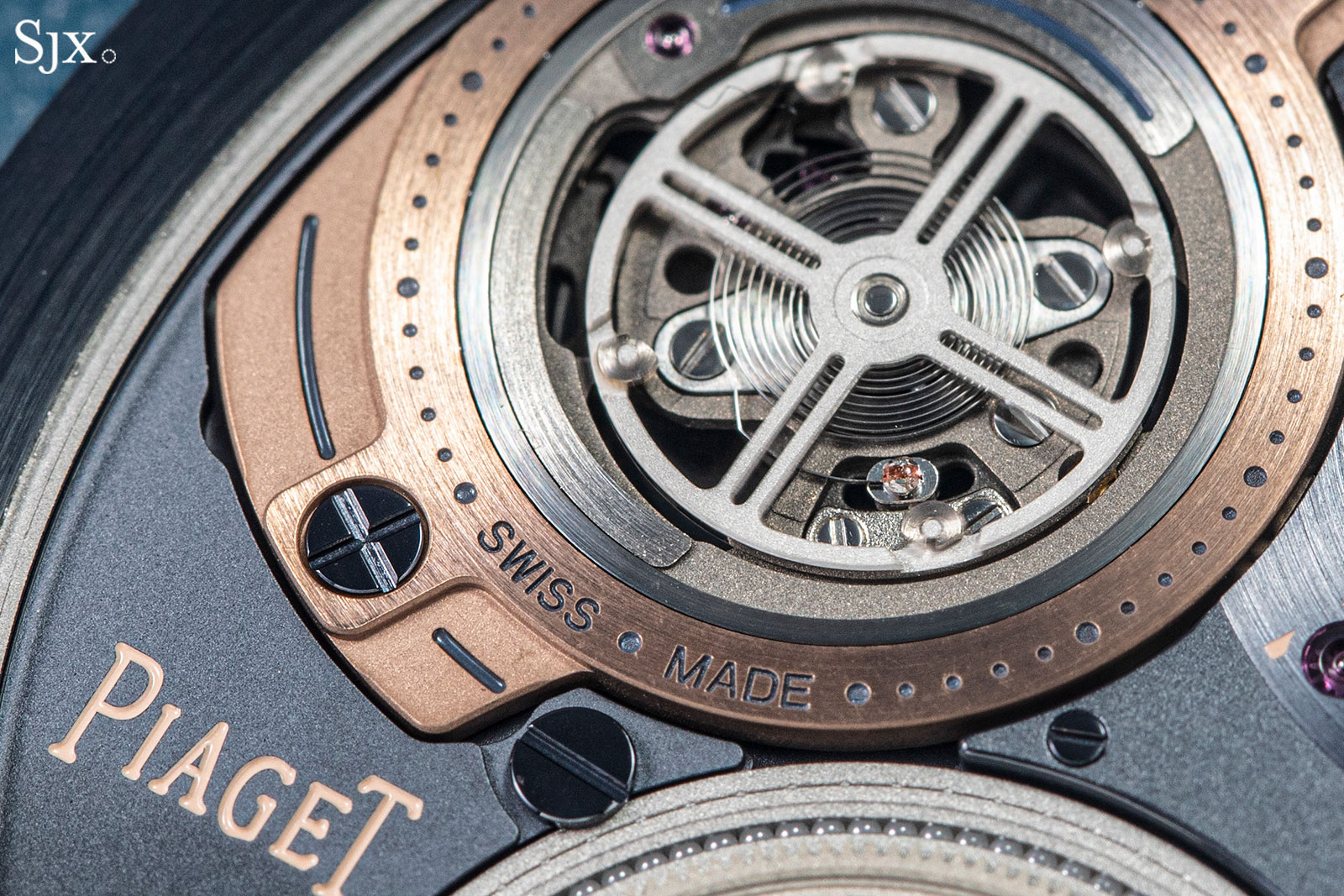
Visually, the most striking element of the face of the watch is the large mainspring barrel at six o’clock. Like the tourbillon, it is held in place by a large ball bearing around its edge, rather than from the top and bottom. The spring is necessarily thin, reducing the amount of energy it can store. This is critical considering the watch consumers 30% more energy than it otherwise would thanks to the presence of the tourbillon. As a result, weight reduction was a major focus all the way through the gear train, with even the barrel given an open-worked treatment to save precious milligrams.
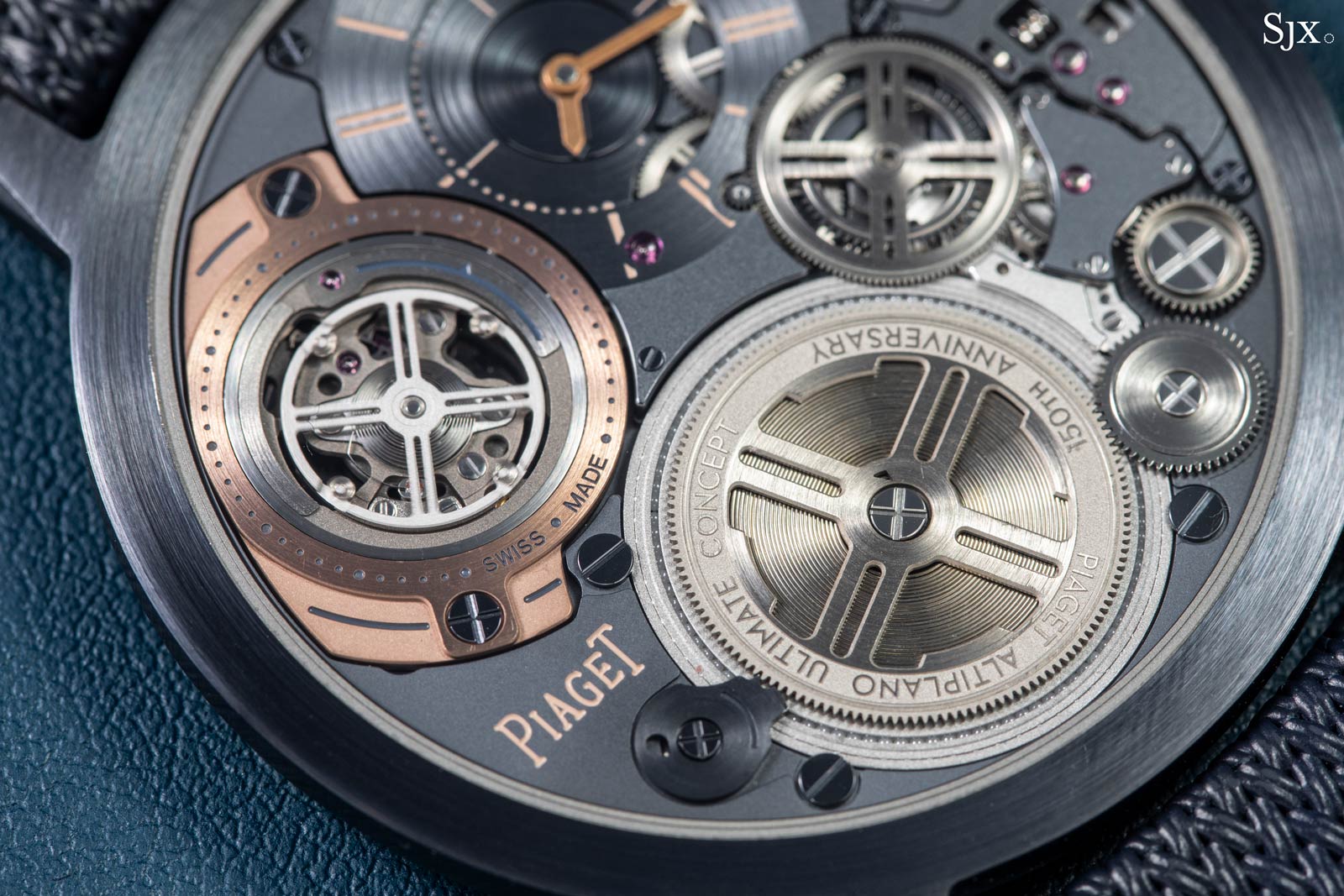
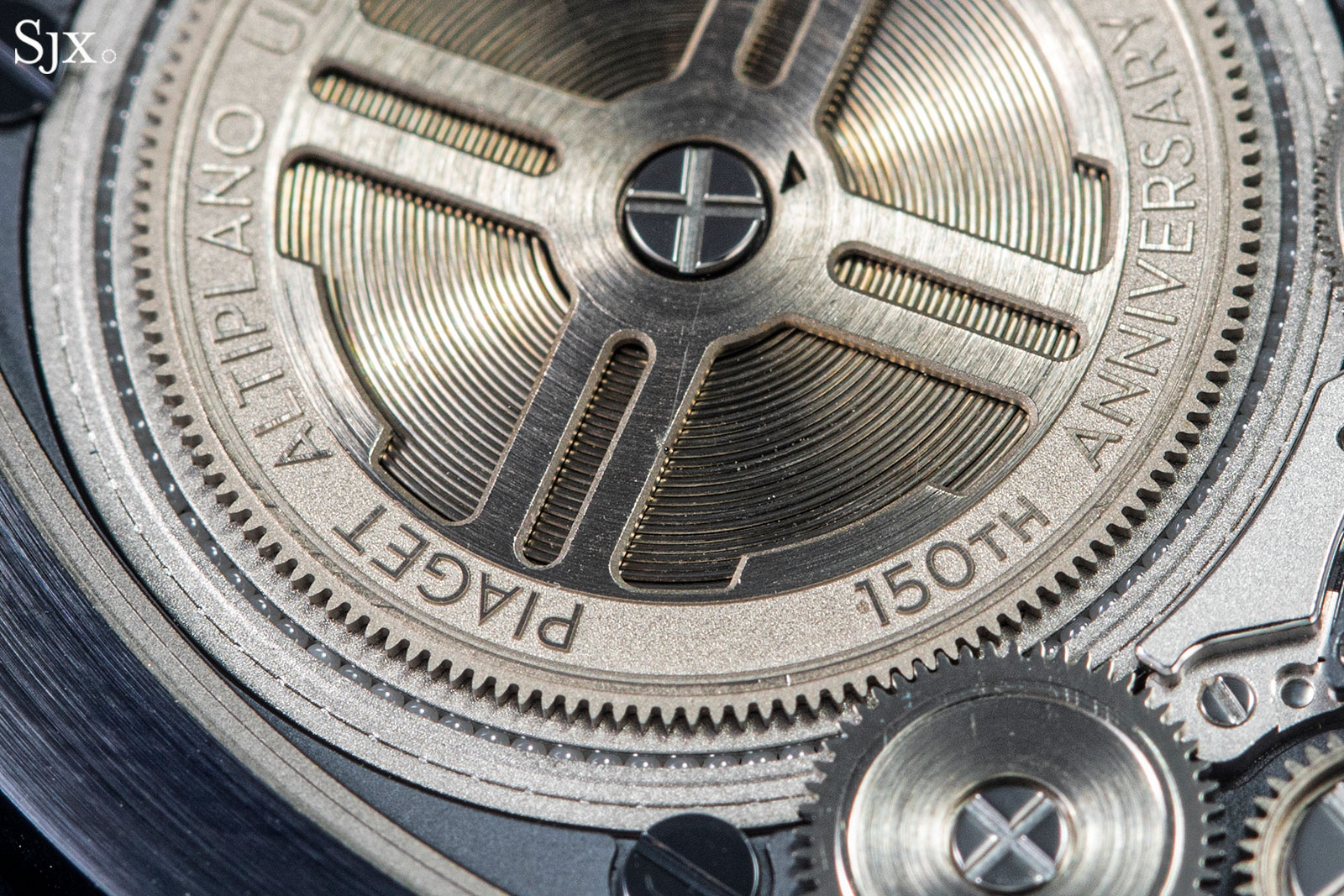
The thinness of the components also impacts the finishing, which is clean and neat but necessarily devoid of the extravagant anglage and steelwork that often (partly) justifies this kind of pricing. This is not a criticism, since there simply isn’t space and finishing is not the point of this watch.
That said, thought has clearly been paid to finishing, which is remarkably consistent and attractive. The grained main plate contrasts nicely with the circular-brushed chapter rings for the hours, minutes, and seconds, the last of which serves as a frame for the tourbillon.
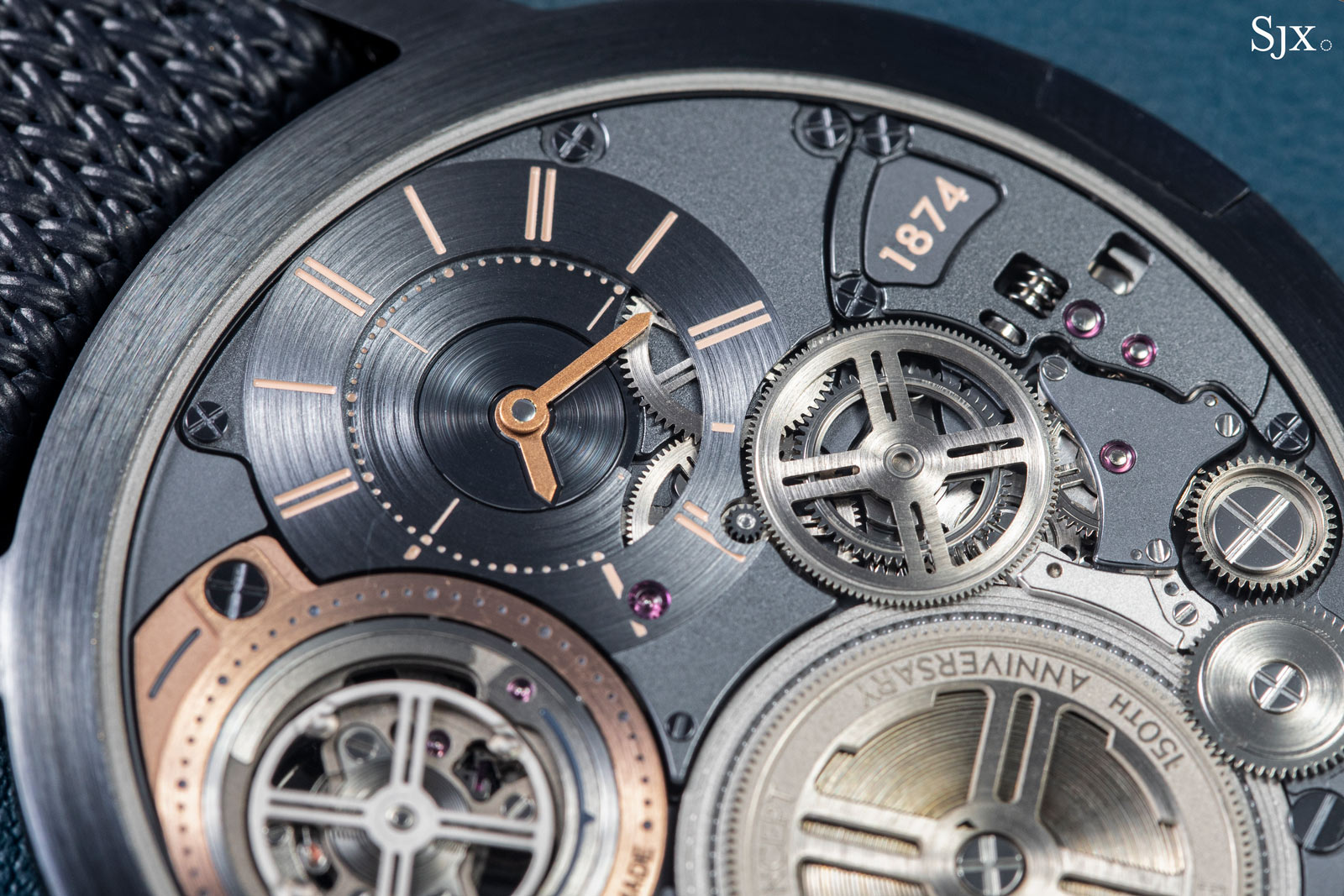
On the thicker components that allow for decoration, it is evident that finishing was applied. This includes the larger screws that are blued but also chamfered on their slots and edges. The open-worked barrel cover, on the other hand, is finished with bevelling on its spokes, but of the stamped variety, a necessity due to its thinness.
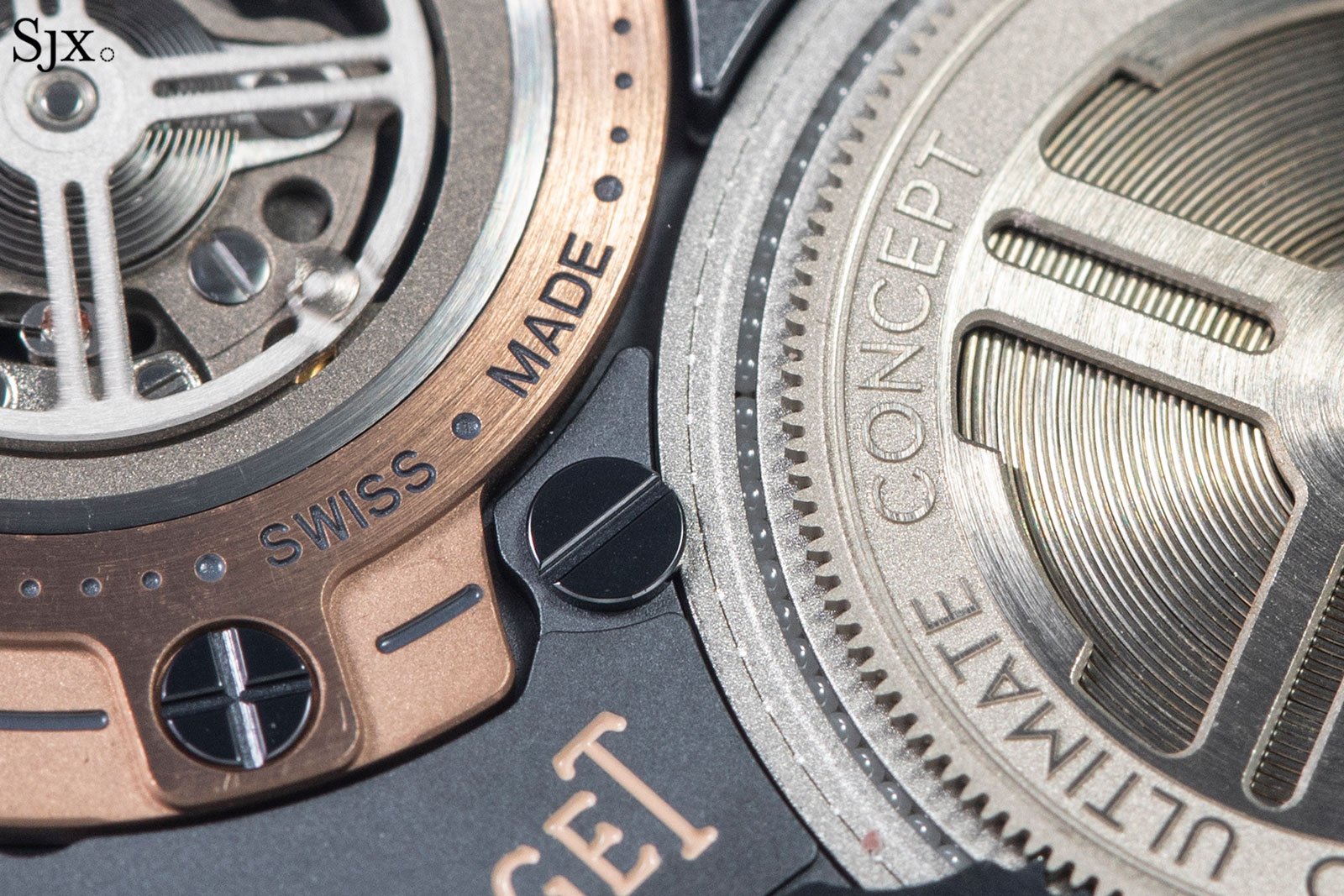
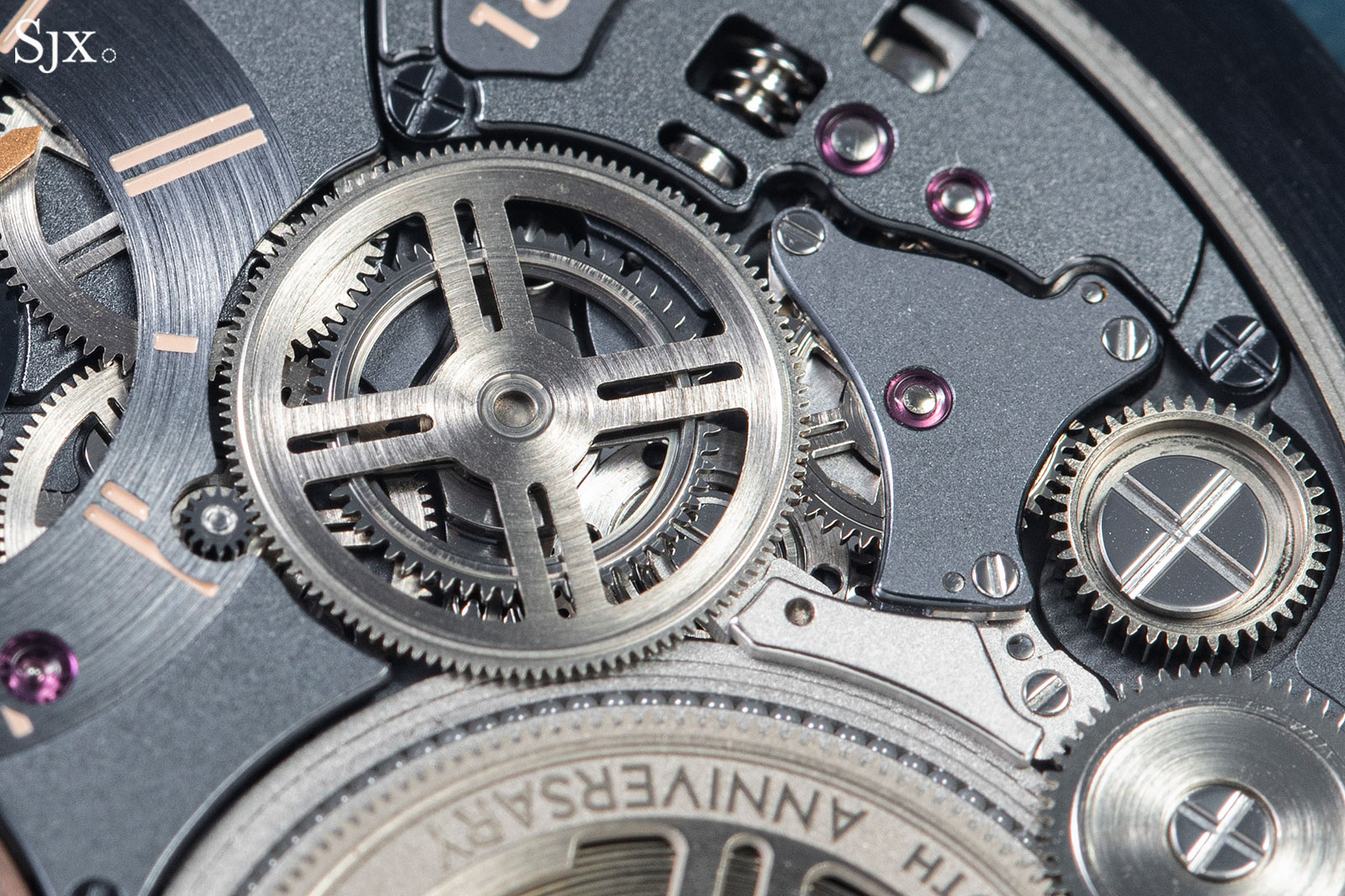
Despite being relatively thin, the plates for the keyless works are finished with mirror-polished anglage
Concluding thoughts
Overall, the AUC Tourbillon is a complete package. It’s shockingly thin, visually dynamic, and ergonomically satisfying. While record-breaking for its own sake can be gimmicky, it feels authentic coming from Piaget, a brand with decades of consistent emphasis on ultra-thin watches. Of course, these attributes come with an inevitably hefty price tag, but I couldn’t think of a better way for Piaget to celebrate its 150th anniversary.
Key facts and price
Piaget Altiplano Ultimate Concept Tourbillon 150th Anniversary
Ref. G0A4951
Diameter: 41.5 mm
Height: 2 mm
Material: M64BC cobalt alloy
Crystal: Sapphire
Water resistance: 30 m
Movement: Cal. 970P-UC
Functions: Hours, minutes, small seconds on the tourbillon cage
Winding: Manual
Frequency: 28,800 vibrations per hour (4 Hz)
Power reserve: 40 hours
Strap: Calf leather
Limited edition: No, but only made to order
Availability: At Piaget boutiques and retailers
Price: Approximately CHF600,000
For more, visit Piaget.com
Back to top.

